

Featured News January 3, 2024
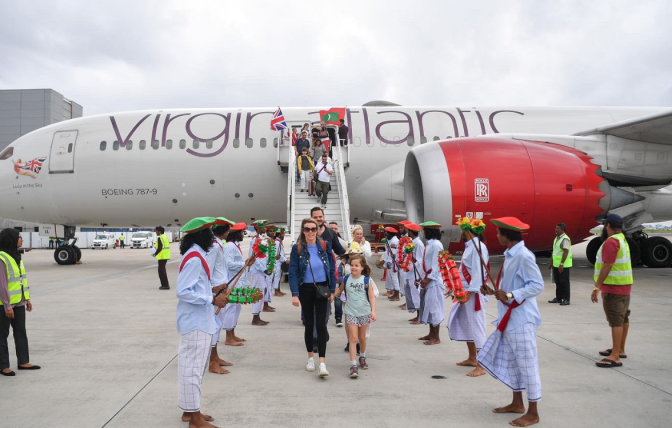
An Overview of the Maldives Tourism Industry in 2023
As 2023 drew to a close, the Maldives celebrated the arrival of 1,878,537 tourists throughout the year, surpassing the set target of 1.8 million arrivals. The milestone of one million tourist arrivals was achieved on 12th August 2023, followed by the 1.8 millionth arrival on 20th December 2023, meeting the annual goal.
The total figures recorded in 2023 reflect a notable 12.1% increase compared to the figures observed in 2022. Daily arrivals consistently exceeded 5,147 tourists throughout the year, with an average stay duration of 7.6 nights.
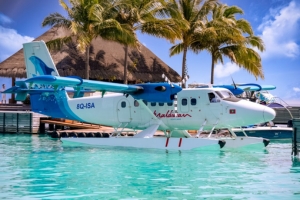
In a last-minute development, India managed to overtake Russia as the leading market with 209,198 arrivals, and Russia closely followed with 209,146. Following this, China secured its place among the top three markets with 187,118 visitors, marking a significant post-pandemic milestone for the country. Subsequently, the United Kingdom, Germany, Italy, the USA, France, Spain, and Switzerland form the list of top visiting countries.

According to statistics recently published by the Ministry of Tourism, the Maldives boasts an operational number of 176 resorts with 43,279 beds, 14 hotels with 1,940 beds, 809 guesthouses accommodating 13,657 beds, and 146 safari vessels adding 2,774 beds.

In 2023, nine new resorts were unveiled in the Maldives, collectively contributing over 2500 beds. Notable additions include NOOE Maldives Kunaavashi, Avani+ Fares Maldives Resort, Amari Raaya Maldives, Barceló Whale Lagoon Maldives, Joy Island Maldives, SO/ Maldives, Madifushi Private Island Maldives, Jawakara Maldives, and Oaga Art Resort.
Velana International Airport hosted 52 airlines in the past year, including scheduled and chartered carriers. Among them, 43 airlines were scheduled, with 22 operating year-round. Additionally, three airlines were exclusively summer-season providers, while seven operated solely in winter, offering both scheduled and charter flights. The total number of charter operators stood at 11.
For the fourth consecutive year, the Maldives received the prestigious title of the World’s Leading Destination at the World Travel Awards 2023, securing its place among the world’s top destinations.
23 new resorts with a capacity of 7,403 beds are currently under development and scheduled to open in 2024. President Dr Mohamed Muizzu has conveyed optimism regarding completing the new VIA terminal for this year’s peak tourism season. The terminal’s construction is focused on enhancing the annual passenger capacity, elevating it from the current 1.5 million to an impressive 7 million arrivals.
The Maldives has set the goal of achieving over 2 million tourist arrivals and 14.3 million bed nights for 2024. It is also predicted that the Maldives will experience a 7% increase in the number of nights tourists spend in the country during the year.
Latest Travel News
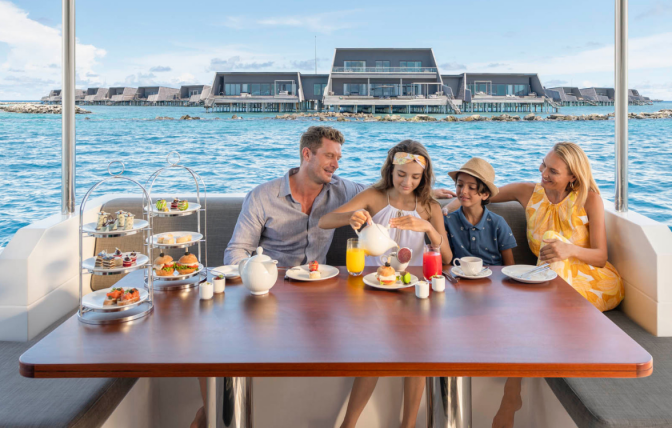
News April 25, 2024
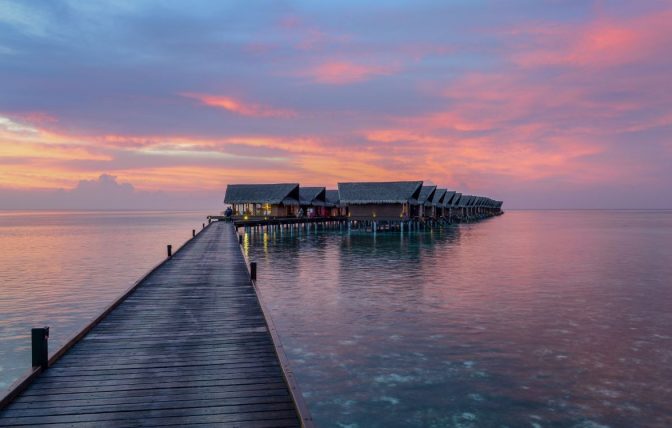

Maldives anticipates robust tourism growth in 2024: MATATO reveals forecast

18 December, 2023
Maldives Association of Travel Agents and Tour Operators (MATATO) has unveiled its tourist arrival forecast for the year 2024, revealing a promising outlook for the tourism industry. According to MATATO’s comprehensive analysis of prevailing trends, the Maldives is expected to welcome a staggering 2.01 million tourists in 2024, marking a substantial 7.9% increase compared to the projected arrivals in 2023.
Several factors are set to propel the Maldives’ tourism sector to new heights in 2024:
- Resurgence of the Chinese Market: The anticipated resurgence of the Chinese market is poised to be a pivotal factor driving increased tourism to the Maldives.
- Opening of New Tourist Establishments: The introduction of new tourist establishments is expected to diversify offerings, attracting a broader range of visitors seeking unique and immersive experiences.
- Completion of Velana International Airport (VIA) Terminal: The imminent completion of the new terminal at Velana International Airport will significantly enhance airport capacity, facilitating a larger influx of tourists.
- Sustained Demand for Luxury Travel: The persistent demand for luxury travel experiences is projected to contribute significantly to the overall growth of the tourism industry.
- Rising Popularity for Destination Weddings and Honeymoons: The Maldives’ increasing popularity as a destination for weddings and honeymoons is expected to be a driving force in attracting tourists seeking romantic and picturesque settings.
The forecast predicts the following regional distribution of tourist arrivals:
- Asia: 1.2 million arrivals (60%)
- Europe: 400,000 arrivals (20%)
- America: 200,000 arrivals (10%)
- Others: 210,000 arrivals (10%)
MATATO’s forecast is based on a meticulous analysis that draws from data over the past three years, the Airports Council International (ACI) 2024 forecast, the November forecast from the Finance Ministry of the Maldives, Booking.com Travel Predictions 2024, PwC’s latest UK consumer sentiment survey, and insights from an AI forecaster.
While the outlook is optimistic, potential risks include:
- Global Economic Downturn: A global economic downturn could pose challenges to the anticipated growth.
- Rise in Travel Costs: Escalating travel costs might impact the enthusiasm of potential travelers.
- Political Instability: Ongoing political instability and conflicts globally could also influence the tourism industry.
The overall outlook for the Maldives’ tourism industry in 2024 is optimistic, with a strong surge in tourist arrivals expected. However, the industry stakeholders and authorities must remain vigilant, considering the potential risks that could influence the trajectory of the industry. The Maldives continues to position itself as a premier destination, offering a diverse range of experiences to cater to the evolving preferences of global travelers.
Related pages:
- Maldives expands Luxury Portfolio with 35 resorts Set to Open by 2025
- Maldives New and Upcoming resorts
- Newest Maldives resorts to Explore in 2023-24
- The Maldives Rising: Recently Renovated Resorts
- The Best Time to visit Maldives A Month-by-Month Breakdown
- Adaaran Prestige Vadoo
- OBLU SELECT Lobigili
- Siyam World Maldives
- Finolhu Baa Atoll Maldives
- Reethi Faru Resort
- Hard Rock Hotel Maldives
- Anantara Veli Maldives
- Atmosphere Kanifushi
- Ayada Maldives
- OZEN Reserve Bolifushi
- Scubaspa Yang, Maldives
- Emperor Serenity, Maldives
- Maldives Aggressor II, Maldives
- Carpe Novo, Maldives
- Scubaspa Ying, Maldives
- Azalea Liveaboard, Maldives
- Blue Force One, Maldives
- Blue Voyager, Maldives
- Ocean Divine, Maldives
- Emperor Leo, Maldives

Maldives Luxury Guide
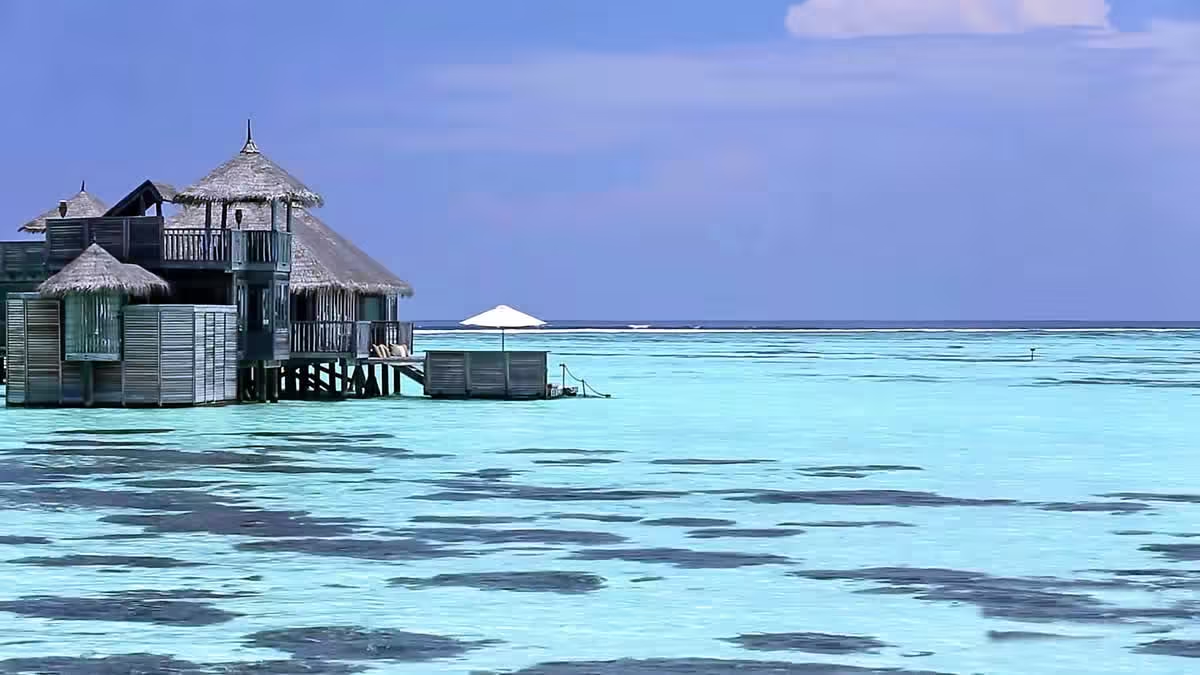
Over a million tourists visit these islands every year for once-in-a-lifetime experiences. Now it's your turn to experience Maldives, the gem of the Indian ocean to discover plenty of hidden treasures. You can experience different experiences of luxury in Maldives best resorts, mingling with celebs in your best beachwear, dining in style, and falling in love with the underwater world. For those seeking romance, the Maldives offers enviably luxurious private accommodation and indulgent spas. Maldives makes the best holiday experiences year after year after year.
Related Pages

10 Best Luxury Resorts in Maldives

Best Group Vacation Getaways in the Maldives

10 Best All Inclusive Resorts in Maldives

10 Best Resorts for Snorkeling

When is the Best Time to visit the Maldives?

10 Best Family Resorts in Maldives
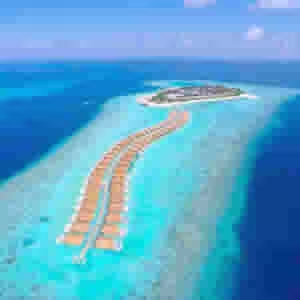
10 Best Resorts near Malé Airport
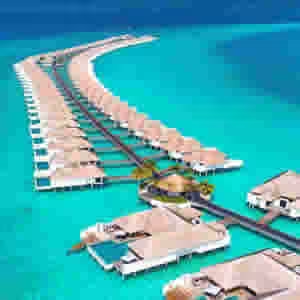
Maldives New Hotels 2019 - 2023

Underwater Restaurants in Maldives
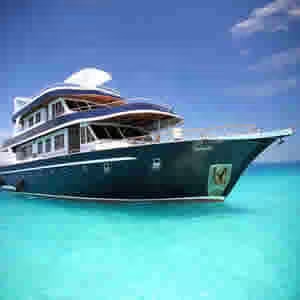
10 Best Liveaboards in Maldives

Maldives Inspiration
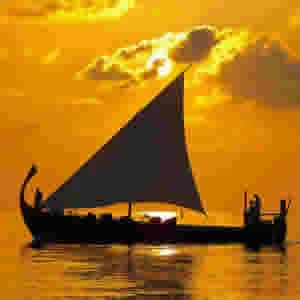
10 Best Things to Do in Maldives

10 Best Adults Only Resorts in Maldives

10 Best Resorts for Gourmets

10 Best Romantic Dining Experiences in Maldives

How to Travel On a Budget

10 Best Wellness Retreats in Maldives
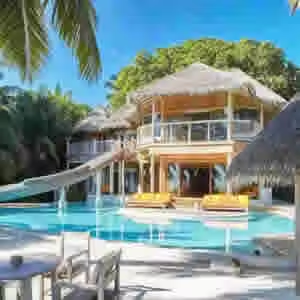
10 Best Beach Houses in Maldives
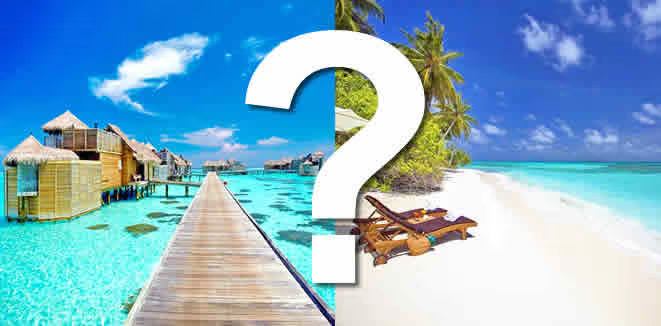
Beach or Water Villa?
Maldives - a name that became synonymous with honeymooners' paradise in the tourism world, has slowly revamped to cater to the needs of families visiting
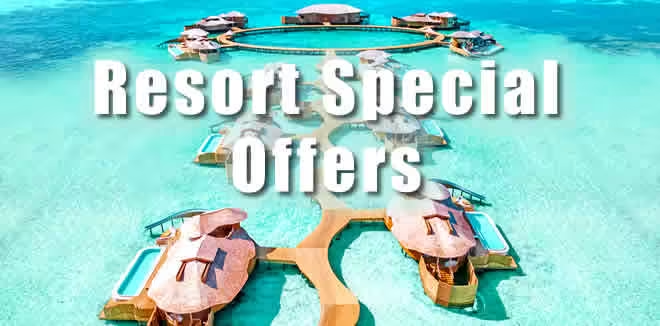
Best Maldives Resort Offers & Packages
Find out more about the most unparalleled Maldives hotel deals and special rates, when Book Direct your next beach holiday

Maldives Hotel Reviews
Some of the best hotels and resorts in the Maldives are already included in this list, and the good part of them offers the best prices. We will constantly add new hotels

10 Exclusive Resorts in Maldives
The Maldives is paradise destination that should be on the bucket list of every discerning travelers. There's a special breed of hotels there that cater to the most tasteful of luxury travelers Read More
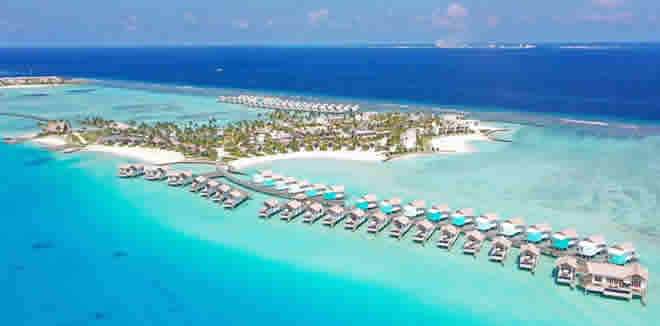
Newest Maldives resorts to Explore in 2024
Here are just 10 of the amazing new resorts in the Maldives that are set to welcome guests Read More
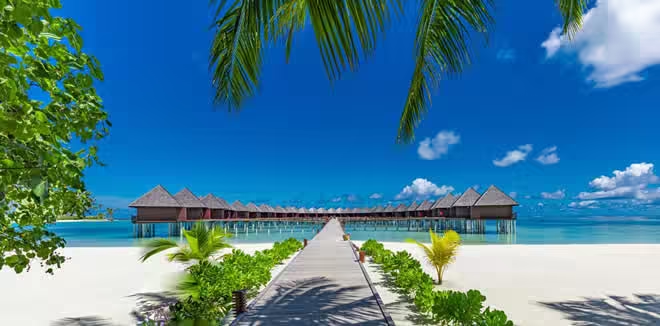
Maldives Romantic Guide
The ultimate ‘flop and drop' and honeymoon destination, the Maldives is the playground for the most amazing and finest utilization of each second of this extremely valuable and hopeful time with each other in tota Read More

Maldives Budget Guide
Budget travellers choose Maldives as their destination of choice thanks to the variety of affordable stays Read More
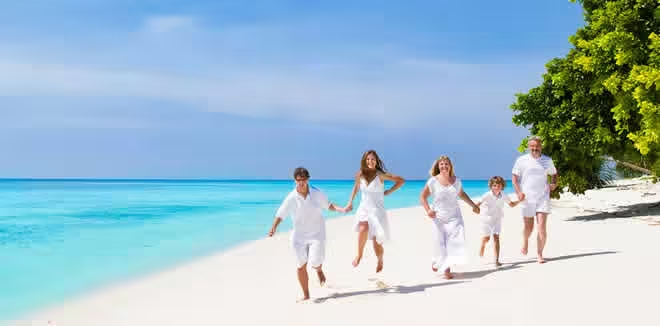
Maldives Family Guide
Maldives - a name that became synonymous with honeymooners' paradise in the tourism world, has slowly Read More

Maldives Diving Guide
The life of these paradise islands below the Indian Ocean's level is the main draw attracting thousands of divers Read More


The changing face of tourism and work: How Maldives is successfully adapting to the pandemic
Valerie mercer-blackman.

It’s December 2023. Rita, a young businesswoman, has just finished meeting with clients in Chennai, India and anticipates meeting friends in Singapore for the holidays two weeks later. An employer-sponsored hybrid work model allows her to work from anywhere. She chooses to work at a guesthouse in Male, Maldives thanks to great Internet connectivity while spending time absorbing the local culture and South Asian cuisine, even trying her hand at snorkeling. Pre-COVID-19, she would have had to fly back from Chennai, India to snowy Chicago where she resides; go to the office for 10 days; work fighting an arduous jetlag; and then fly back East almost 10 thousand miles to Singapore. Now not only is she significantly reducing her carbon footprint, but she also feels revitalized after her stay in the Maldives, and is happier and more productive. Not to mention, she has contributed to Maldives’ tourism industry.
Is Rita’s practical yet creative twist on work-life balance indicative of the future of tourism—and work?
According to various measures in the World Bank’s latest South Asia Economic Focus (SAEF), the region’s tourism heavy nations—Maldives, and to a lesser extent Nepal, Sri Lanka, and Bhutan—are well poised to take advantage of new services and digital technologies along with a new-found need for wellness post-pandemic, to boost their economies . See a prior blog on services as the driver of development in South Asia.
Tourism: Savior for a Post COVID Economy?
Before COVID-19, tourism was among the fastest-growing sectors in Maldives and Bhutan, with a growth rate that outpaced GDP growth rates. The pandemic and related stringent measures hit all South Asian countries dependent on tourism hard, leading to a deep contraction in GDP in 2020. According to the World Travel and Tourism Council , the entire global tourism industry, particularly business travel, was devastated by the pandemic. Business spending decreased by 61 percent from 2019 to 2020 compared to 49 percent for leisure travel. Business travelers on average spend much more than leisure and domestic travelers, making the recovery of business spending essential for the entire travel sector. As the industry struggles to recover, there is also great uncertainty about how the future of work could transform the demand for travel, and many expect international business travel to be the last segment to recover as it is most sensitive to travel restrictions.
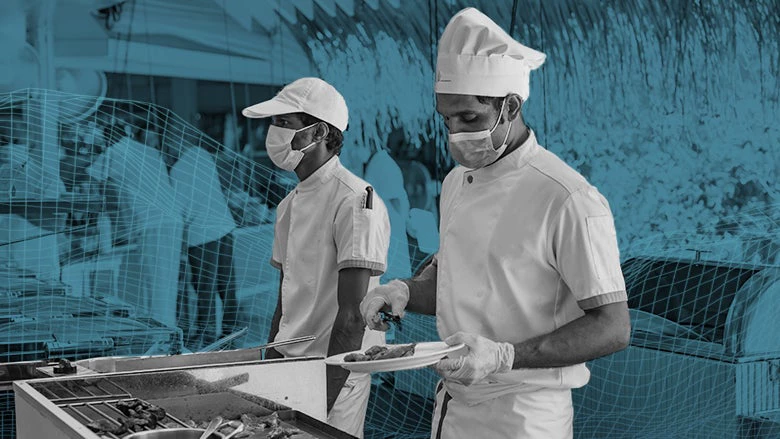
However, despite these uncertainties, our analysis in the South Asia Economic Focus shows that tourism has the potential to be a fast-growing sector post-COVID amidst new remote work possibilities and changing travel behaviors:
- The desire for travel is strong, spurred by the pent-up demand in leisure travel, which has been driven by new hybrid work environments and household savings during the pandemic.
- As remote work becomes a long-term reality, more than half of the global tourists have expressed interest in extending business trips or working remotely in tourism destinations while enjoying leisure time.
- There is also evidence of an increase in the average duration of stay by 2.4 days since 2020, according to Tourism Status Updates by the Ministry of Tourism Maldives.
- The ravaging effects of COVID-19 on mental health may also increase the demand.
- COVID-19 is changing tourists’ attitudes and behaviors. According to recent online surveys by booking.com , more than half of global travelers, particularly younger travelers, started looking for travel plans that were more sensitive to the environment and local communities, including staying away from crowded tourist attractions and exploring lesser-known destinations.
South Asian countries already have a comparative advantage in developing niche tourism and ecotourism, as they are endowed with diverse natural and cultural resources. Therefore, small and tourism-dependent countries can view the pandemic as an opportunity to unleash the potential of tourism and pave the way for sustained growth going forward.
Maldives: Setting the Bar High in Tourism
Maldives has been exemplary in its resilience and ability to recover. In 2021, visitor arrivals reached more than 80 percent of pre-COVID levels, far outpacing other similar tourist destinations.
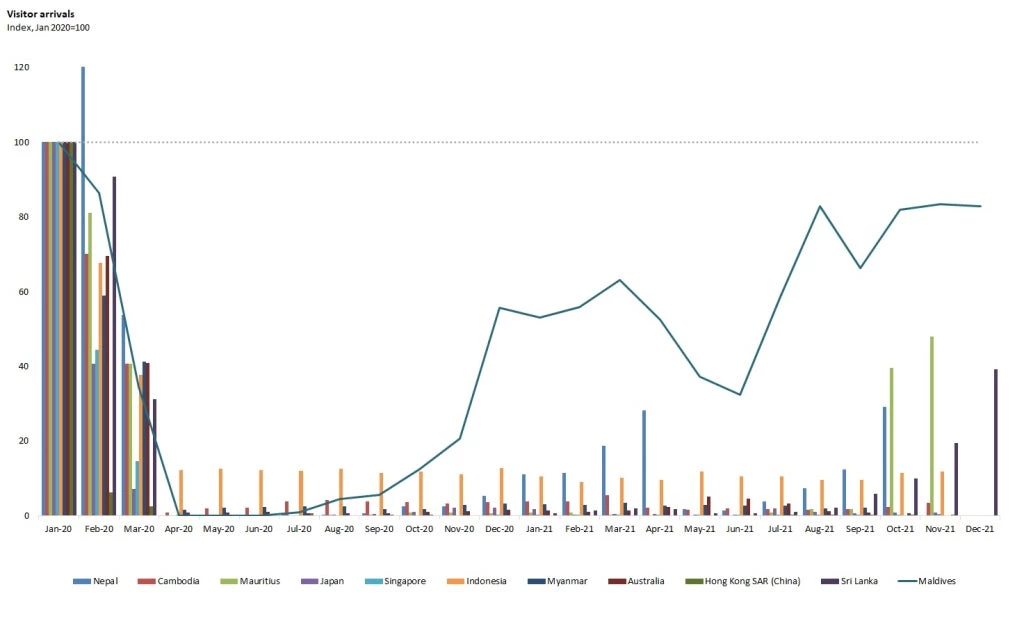
These are some lessons we can draw from Maldives’ spectacular recovery in the tourism sector:
- First, the government’s policies and interventions around the border restrictions and health regulations play an important role in the recovery of the tourism sector. For example, Maldives took a concerted effort to reopen its border to tourists as early as July 2020 but implemented strict hygiene protocols for tourists, including one of the fastest COVID-19 vaccination campaigns in the world. This has improved the confidence of travelers and has created high-value consumers.
- Second, Maldives quickly made an effort to capture new source markets and expand to new countries of origin. For example, the emerging source of the international tourist market from Russia and India—in part arbitraging quarantine rules—has compensated for the tourism revenue loss from China, its top source market before the pandemic.
- Third, Maldives is seizing changing preferences to promote a better image. In 2020, Maldives launched a marketing campaign with the tagline “ Isolation never looked this good ” to emphasize its unique reputation of being a niche destination, while emphasizing environmentally sustainable tourism.
- Fourth, it is investing in digital technology as the demand for high-speed internet and contactless services rise due to the pandemic. In Maldives, more than 60 percent of the population has access to broadband Internet—with relatively high bandwidth speed—while other tourism-dependent South Asian countries are still lagging , limiting the possibilities to meet travelers’ need for working remotely. Moreover, digital platforms will be important in minimizing physical interaction when traveling, while still fulfilling travelers’ needs. For example, one of the luxury resort in Maldives, has developed an app to facilitate contactless services including ordering food, virtual check-in and check-out, and other amenities to adapt to changing customer behaviors.
Adapt or perish? Maldives is choosing the former. It behooves other South Asian nations to pay attention as they build back resiliently post COVID-19.
- Digital Development
- COVID-19 (coronavirus)

Lead Economist
Join the Conversation
- Share on mail
- comments added

- Testimonials
- Work With Us
- Meet The Team
- Sign Up Today
- My Bookmarks
- Outlook Features
- Corporate Stories
- Business Insights
- Industry Spotlights
- Agriculture
- Architecture
- Business Travel
- Construction
- Energy & Utilities
- Food & Beverage
- Local Government
- Manufacturing
- Oil & Gas
- Supply Chain
Visit Maldives : Inside the tourism industry of Maldives

Maldives, commonly referred to as Maldive Islands and formally known as Republic of Maldives, is a fascinating stretch of landmasses in the northern Indian Ocean.
The independent nation is made up of around 1,200 coral islands and sandbanks, of which 200 are inhabited, stretching more than 820 kilometres from north to south and 130 kilometres from east to west.
This unique geography has resulted in a reputation for tourist luxury, with resorts often being housed on their own island and offering the perfect, all-inclusive private getaway.
Permanent inhabitants are almost all Maldivian, an ethnic group formed as a result of various groups of settlers arriving throughout the country’s history, the first being Tamil and Sinhalese peoples from Sri Lanka and Southern India.
An important source of employment for locals derives from tourism, with visitors to the islands spoiled by the pristine beaches and opportunities to explore sea life and partake in water sports.
The past decade has seen the industry open up, not least because inhabitants have been granted the power to build guesthouses on their islands, providing competition to resorts which have traditionally dominated the accommodation scene here.
THE BUSINESS END
Despite its reputation as a luxury travel destination, Maldives is one of the world’s economically poorest nations, its developing economy based around fishing and boat building.
Tourism will be vital in the ongoing development of the nation. It is a fast-growing sector of the economy and is able to attract visitors all-year round, especially in hubs like Male which is home to an increasing number of modern hotels.
A look into February 2019’s statistics is cause for promise, with figures showing a 16.8 percent increase in visitor arrivals compared to the same month last year. In total, 168,583 visitors were recorded, China accounting for 17.8 percent of the total and European markets some 55 percent.
As of February 2019, 137 resorts, 151 safari vessels, 12 hotels and 526 guesthouses of local islands were in operation, creating a capacity of 45,642 beds. Occupancy rate averaged 76 percent with an average stay of just over six days.
A key area of focus will now be on extracting more revenue per arrival. Despite an increase in visitor numbers, tax revenue from tourism goods and services actually fell slightly when compared to the beginning of 2018.
However, the fact that 20 new resorts are due to open this year should help to bring in more income.
VISIT MALDIVES
Visit Maldives (or Maldives Marketing & PR Corporation (MMPRC)) is mandated to promote all things tourism in the country, marketing the nation as a go-to destination for business travellers and holiday makers alike.
A year on from last talking to the association, we caught up with Thoyyib Mohamed, the organisation’s current Managing Director, who fills us in on recent advancements made and advice for those paying the nation a visit.
Q&A WITH THOYYIB MOHAMED, VISIT MALDIVES
What key progress have you made since we last featured visit maldives.
Thoyyib Mohamed (TM): Last year our main mission was to promote Maldives in different market segments. We have made successful campaigns and progress in this regard since we last appeared in Asia Outlook. By the end of March 2019, Maldives recorded 482,972 tourists from all over the world which is an increase of 15 percent compared to the same period last year.
How would you say the Maldives has developed in recent years as a business travel hub and what are the key reasons behind its growing appeal?
TM: The resorts and hotels in Maldives are increasingly designed to cater for the business traveller. Hotels are equipped with the latest technologies to meet their needs. Important diplomatic and business meetings happen every day at these hotels in Male City. We believe the economic megaprojects of the country play a key role in opening Maldives as a hub for business. Maldives is a fast-developing country with great opportunities in the travel and hospitality industry, therefore, the developmental prospect combined with the amazing natural beauty attracts a lot of business travellers every year.
Why, in your opinion, should someone visit the Maldives?
TM: Maldives is definitely unlike any other country. The beautiful geographic features, the unique culture and the warm nature of the people are some of the unmistakeable characteristics of our nation. Whether you are looking for a quiet peaceful moment in the sun or you want to stand on a roaring wave, Maldives will definitely meet your expectations.
Are there any specific attractions, landmarks or places to eat and drink that you would recommend?
TM: Each and every atoll in the Maldives has a special and unique feature. It can be a place, tradition or even a food item. In the capital city you can enjoy almost every type of major cuisine from the world. There are unique underwater attractions such as spas, restaurants and rooms in the resorts. Since Maldives is 99 percent sea, the underwater beauty and dive points are also immensely popular among tourists.
What are the best ways of getting around the country?
TM: We currently have three domestic airlines in the Maldives; the national airline Maldivian and private airlines Manta Airline and Flyme travel to all areas within Maldives. Maldives also have the biggest seaplane fleet in the world, which is operated by Trans Maldivian Airways. Other than air travel, there are convenient public ferry systems and public land transport networks.
What trends are transforming the tourism industry in the Maldives at present? How are you responding to these trends?
TM: After the introduction of the guesthouses, it has quickly become one of the most popular products from Maldives. We are also working to market cultural and experience tourism. Our statistics show an increase in solo travellers and social media travellers, and we are currently focusing to cater to these demographics as well.
How do you see the Maldives developing as a business travel hub over the next year to two years?
TM: As tourism is the largest contributor for the economy of our country, the government and the private investors have a mutual interest in the sustainability of the sector. Government is committed to expanding the international airport in order to increase arrivals. New resorts are developing, and many projects related to tourism are underway. Together with the Ministry of Tourism of the Maldives, MMPRC will embark on marketing campaigns and target new and emerging markets to increase exposure of the Maldives brand as a business and leisure destination.
Are there any plans or projects in the pipeline that you wish to highlight?
TM: MMPRC is currently engaging in marketing campaigns on social media and other internet platforms. Recently we signed a contract with Singapore Airlines for a joint campaign to explore and implement activities to promote Maldives. These are just a few of the many activities we have already started this year. We are also partaking in the regular roadshows, FAM trips and international market fairs.
Are you optimistic about the future of the tourism industry in the Maldives?
TM: Certainly, we see great potential for Maldives tourism to develop. Our marketing campaigns are not nearly as good as broad as some of our competitors’. Therefore, with the right approaches, we can certainly increase arrivals by a large amount.
IN FOCUS: MALE
The Maldivian capital Male is fascinating in that it represents a stark contrast to the isolated tranquillity of the rest of the island nation.
While the city is not awash with attractions, owing largely to its pintsized nature, it is the best place to meet locals and gain a flavour of Maldivian life. The fish market is thought as the sole of Male, a hive of activity and important source of produce for many of the city’s restaurants.
That said, it does contain some of the country’s most important cultural and historical landmarks. For example, the Old Friday Mosque is UNESCO-protected and said to be one of the best structures made out of coral anywhere in the world.
The early 20 th century Muleeaage, or Sultan’s Palace, is another landmark worth visiting and is next to the Medhu Ziyaarath, the tomb of Abul Barakat Yoosuf Al Barbary, known for bringing the Islamic faith to Male in 1153.
More recent architecture can be found in the form of the China-Maldives Friendship Bridge, which connects the capital to nearby Hulhule. The project has been slightly controversial, with many locals claiming it will disrupt the ferry service across the lagoon.
TRANSPORT LINKS
The island of Hulhule, two kilometres from Male, is home to Velana International Airport, transit hub for almost all flights in and out of Maldives. Two other international airports, Hanimaadhoo and Gan, also serve respective foreign markets in India and Sri Lanka.
Domestic routes are served by national carrier Maldivian and FlyMe, while Mega Maldives Airlines flies into Beijing and Shanghai. Air is the most efficient way of getting between the islands, with 12 airports scattered around the archipelago.
Remoter areas can be reached by seaplane, a great way to soak up views of the islands, reefs and lagoons, while boats are another common way of navigating Maldives.
On the islands themselves, bicycles are the best way to get from A to B. These are often supplied to guests free of charge, and mean that you can easily enjoy a holiday here without having to get into a car or hop on a bus.
Male and Addu City are the only places where a bus service is necessary, the main purpose being to connect passengers to airports and seaplane terminals. Speedboat transfers are another option for those looking to get to and from these air transit hubs.
You Might Also Like
Dhl express : time-definite shipments, spinnaker support : empowering telcos, centre of decommissioning australia : on a mission to decommission, oceania football confederation : scoring for sustainability, what new ideas in your industry excite you.

Join in the Conversation
Issue 67 out now.

Latest on APAC Outlook

Heavy Vehicle Industry Australia : Spotlight
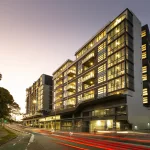
Deicorp : Sydney’s Trusted Property Partner

RG Gold : Forging Golden Prospects

Philippine Airlines : Pioneers of the Skies
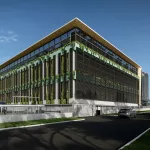
Evolution Data Centres : Sustainable Growth in Emerging Markets

Mining Pro : Capabilities and Commodities

Cladtek : Delivering Multifaceted Additive Solutions

The Drake Group : The Road to Revolutionary Innovation

MTM Pty Ltd : Precision and Strength

Kongsberg Defence Australia : Delivering World-Class Technology Systems

Coca-Cola Europacific Partners Papua New Guinea : Bottling Brilliance

FinTech Australia : Spotlight
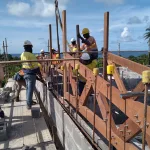
Hornibrook NGI : Grabbing Construction by the Horns

Tasty Fresh Food Co : Conquering the Lunch Truck Concept

MASPRO : Safety, Reliability, Productivity

HL Design Group : Designed with a Difference
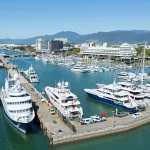
Ports North : Regional Development, National Excellence


Pacific Tug Group : Tugging Down Under – It’s What We Do Best

AVega Bros Integrated Shipping Corporation : Brotherly Cargo Brokerage

Tropicana Corporation Berhad : Redefining the Art of Living

Supashock Advanced Technologies: Supplying Stability

Simonds Group : Delivering Home Comfort
Industry events.

Mines & Money @IMARC / 31 Oct – 2 Nov 2023
Sign in to your account
Username or Email Address
Remember Me
- Get Involved
Opportunity for sustainable tourism to accelerate Maldives’ sustainable development
June 30, 2019.
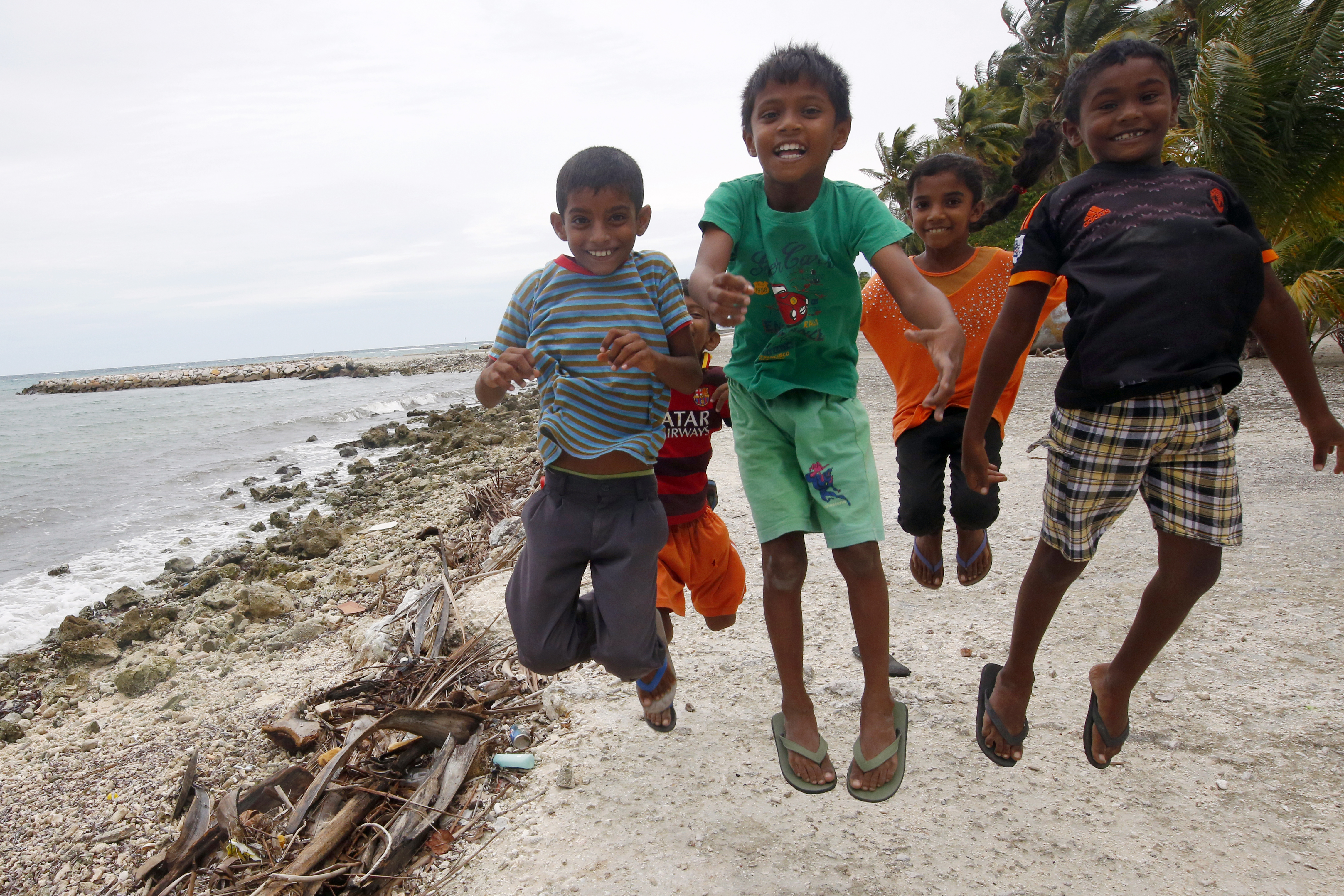
--- Image caption ---
Speech by Ms. Akiko Fujii, Resident Representative of UNDP Maldives at the IMTM Sustainable Tourism Forum, held in Male', on 26 June 2019.
· Managing director of International Maldives Tourism Market (IMTM) Ms. Hawwa Shiuna,
· members of the tourism fraternity,
· state and local actors and other esteemed guests,
First of all, I would like to congratulate IMTM and its partners on successfully organising today’s forum on Sustainable Tourism Development, an issue of increasing significance to the Maldives!
I want to thank the organisers for giving me the opportunity to speak at this function, and share my thoughts on how sustainable tourism can accelerate Maldives’ sustainable development.
As a new comer to the Maldives, just like other foreigners, I was instantly attracted by the country’s natural beauty. I am also fully aware of Maldives’ outstanding economic achievement. Maldives has doubled GDP per capita from USD 4,460 to USD 9,760 between 2007 and 2017 and has transformed from a low to middle income status in a matter of decades. Needless to say, the tourism has been the central driver of this amazing economic achievement.
However, we have also witnessed the volatility of the sector, which negatively affected Maldivians in recent years; the global financial crisis of 2007, and the global mass coral bleaching event of 2016 to name a few. Each of these instances created ripple effects in the lives and livelihoods of every-day Maldivians involved not just in the tourism sector, but also the many subsidiary industries that support it.
It’s time for us to think earnestly about the development of the tourism industry that is more sustainable and resilient, but also act as a catalyst to unlock local socio-economic development in an integrated and transformative manner.
So what exactly is Sustainable Tourism?
At the UN we refer to it as the kind of tourism that takes full account of its current and future impacts on the economy, society and the environment. It is a tourism that does not just address the needs of its visitors, but also considers the rights and needs of its host communities.
The UN’s Sustainable Development Goals (SDGs) recognizes the potential of sustainable tourism industry in achieving especially SDGs 1 (Poverty), 8 (Decent work) and 12 (Responsible consumption). In Maldives’ case, I would like to add 13 (Climate Action) and 14 (Life below water) as relevant goals.
Accordingly, the tourism sector that is developed towards achieving SDGs should promote 3 main dimensions; environmental integrity, social justice and inclusive economic development.
As we are aware, the Maldives’ Tourism, which heavily depends on the country’s natural beauty, is under serious danger from global and local events.
Changing climate and warming seas have bleached the spectacular coral gardens. Strong currents and unpredictable weather patterns are eroding our beaches. These events threaten not just the tourism sector, but the survival and well-being of ordinary Maldivians across the country.
In addition to consequences of global-warming, localized human-made activities have caused an adverse effect on the environment. The damage created by ocean plastic wastes is just one example.
In the Partnership Forum held two weeks ago, I was pleased to learn of the current governments’ commitments to advance principles of Blue Economy, ensuring the sustainable use of ocean resources for economic growth, improved livelihoods and overall ocean ecosystem health. I hope that this high-level political commitment will transform the local tourism development to practise sustainable tourism principles across the Maldives.
The second dimension of Sustainable Tourism is social and cultural development. A few weeks ago, the country was visited by the UN Special Rapporteur in the field Cultural Rights.
She observed that “parts of the tourist industry in Maldives had been operating in a somewhat separate, parallel universe, where tourists were not given adequate opportunities to see or hear Maldivian performing arts and culture, share Maldivian cuisine or learn about Maldivian ways of life and crafts.”
She stressed that “cultural knowledge and practices be revived, professionalized or used to find new developments in the interaction with visitors.” Efforts in this regard can be employed by the Tourism Sector to drive local economies, as well as to enrich local cultures.
The third dimension of Sustainable Tourism is that of enhancing equality and economic justice among local population.
40 years since the advent of Tourism, major gaps can still remain in development gains, between the capital city Male’ and other outer islands. According to the 2014 Maldives Human Development Report commissioned by UNDP, for instance, a person living in Male’ is likely to receive twice more income, and complete 3 more years of schooling, than a person living in an outer island. More recently, the Household Income and Expenditure Survey of 2016 states that “91.1 percent of countries’ poor population live in the Atolls (other than Male)’. “
Tourism sector can contribute immensely to drive local economies in their surrounding island communities. Instead of working as independent entities that either import, or create subsidiary industries within our own premises, the Tourism Sector could invest in neighboring communities to drive local business for example: agriculture and fisheries, ultimately diversifying and strengthening local economies. This would not only drive local economies, but strengthen the economy and through diversification, reduce the adversity of impacts to the Tourism sector.
As of 2014, one-fifth of all employed Maldivians work in the tourism industry. And of this sizeable tourism workforce, 14% work in resorts. However, less than 4% of this resort workforce are women. Greater attention needs to be given to drive more women and youth into employment in the Tourism Sector, by reducing obstacles to work in resort islands and enhancing their professional skill sets. This involves enabling decent work and living conditions for staff, and providing opportunities for job advancement within the hierarchy of tourism establishments.
Sustainable practices in tourism development also require business operators to assess the future tourism in the Maldives. Globally, we are seeing rapid changes in how tourism is practiced. These changes are coming about to complement changes in the mindset of travelers, who are increasingly aware of how decisions they make have lasting impacts on local communities. There is also a greater interest from travelers to interact and experience local communities and their ways of life. To be sustainable, the tourism sector needs to assess and adapt to these global changes.
Locally UNDP has partnered with the Maldivian government on key initiatives such as the Baa Biosphere reserve, and the Tourism Adaptation Project. The Baa Biosphere Reserve in particular, is a significant example of how carefully planned sustainable tourism practices can generate local development, while also protecting the environment.
Again, 2030 Agenda for Sustainable Development provides an integrated framework for the sustainable tourism. In this vein, the wide representation at today’s forum gives UNDP a new hope to engage in Sustainable Tourism Initiatives across Maldives. I hope that the discussions today will lead to lasting, positive impacts for the country, and take us one step closer to achieving the Sustainable Development Goals in Maldives. Thank you.
Related Content
Publications, comprehensive study of the maldivian civil society.
This is the second iteration of a Comprehensive Study on the Maldivian Civil Society.
CLIMATE INDUCED MIGRATION IN MALDIVES: PRELIMINARY ANALYSIS AND RECOMMENDATIONS
It is known that climate change is both a threat and risk multiplier. The scientific community has argued that the increase in severity and frequency of climate-i...
Press Releases
European union and undp sign partnership agreement towards enhancing access to justice, accountability, and transparency in the maldives, leading the charge in sustainable waste management with ev adoption, full steam ahead towards meeting sustainable energy objectives for the maldives.

Maldives Association Of Tourism Industry
The Maldives Association of Tourism Industry (MATI) is a non-governmental, non-profit organization formed in 1982, for the purpose of developing tourism in the Maldives. More than four decades of MATI’s service has been provided to almost all the travel and tourism related issues which arise in Maldives.
A key function of MATI is coordinating with all mandatory government policy making bodies to align new laws, regulations and guidelines to Tourism Industry best practices.
Additionally, we represent the industry internationally and locally by attending different seminars, organizing and providing research and offering professional consultation to governmental, private and international organizations.
Areas of Focus
- Sustainable Tourism Development
- Human Capital Development
- Preservation and Promotion of Culture and Heritage
- Community Engagement
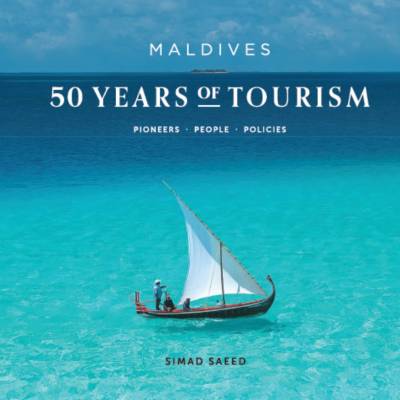
Driving Sustainable Tourism.
Make Maldives the World Leader in Sustainable Tourism.
Continuously monitor the internal and external environment for the tourism sector and proactively strive to minimise challenges and maximise opportunities within the industry through engagement and mediation.
Announcements

Press Release- The Maldives Association of Tourism Industry (MATI) holds its 34th Annual General Meeting

Press Release
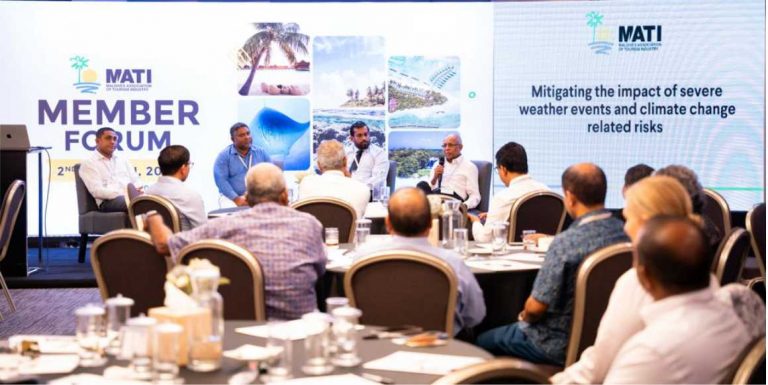
MATI hosts the 2nd edition of the MATI Member Forum

Press Release- Member Forum, 1st Edition, 2023
Industry news.

JA Manafaru adds Seaplane to ‘The Real Maldives’ Experience
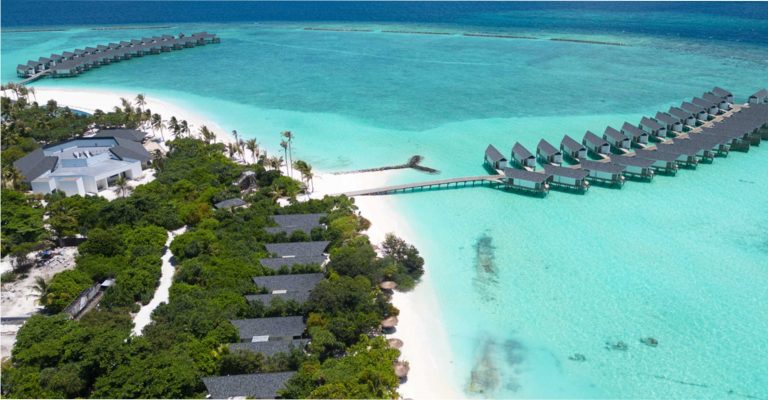
Amari Raaya Maldives Celebrates Dual Victory at LLM Readers’ Travel

Patina Maldives Debuts Sustainable Capsule Collection with Menswear Designer Chris Stamp

Fun, Sun and Adventure Escape for Locals and Work Permit Holders by Ifuru Island Maldives
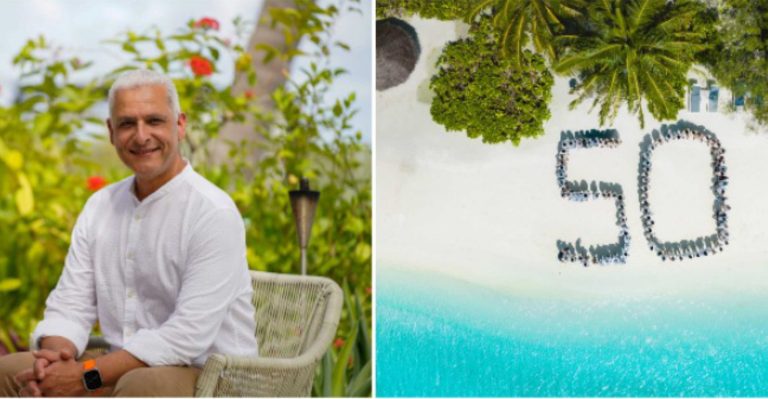
Fifty years of Furanafushi: a story of authentic Maldivian hospitality with Sheraton Maldives
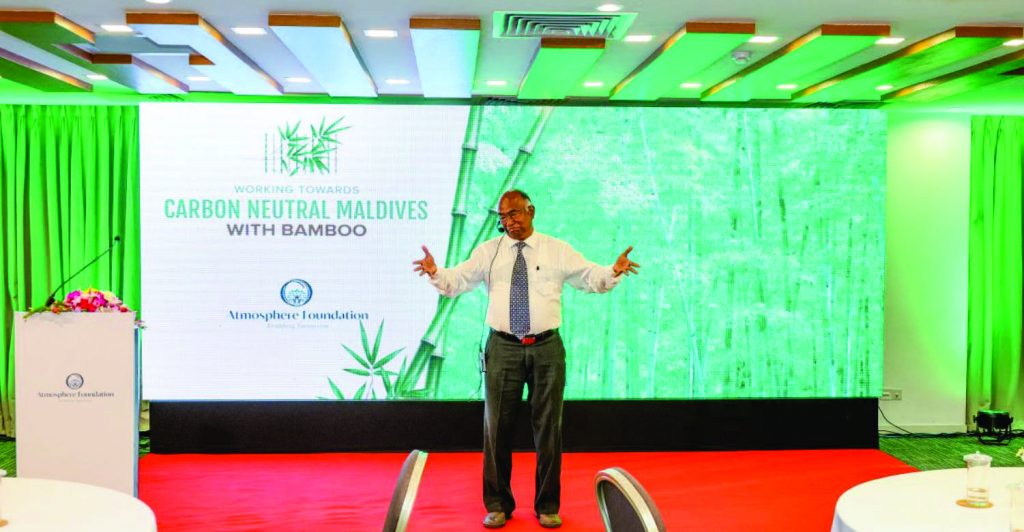
Launch Of The ‘Bamboo for Climate Mitigation’ Project by Atmosphere Foundation
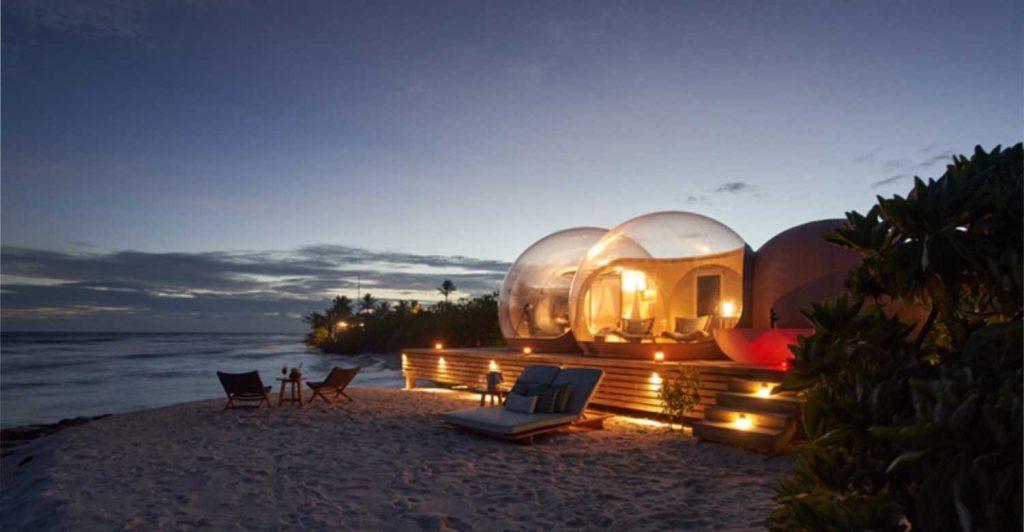
Luxury ‘Beach Bubble’ at Seaside Finolhu Baa Atoll Maldives

Mr. Ahmed Hafeez (Financial Controller, MATI)

Mr. Ahmed Nazeer (Secretary General, MATI)

Mr. Hussain Afeef (Vice-Chairman, MATI)

Mr. Salah Shihab (Vice-Chairman, MATI)
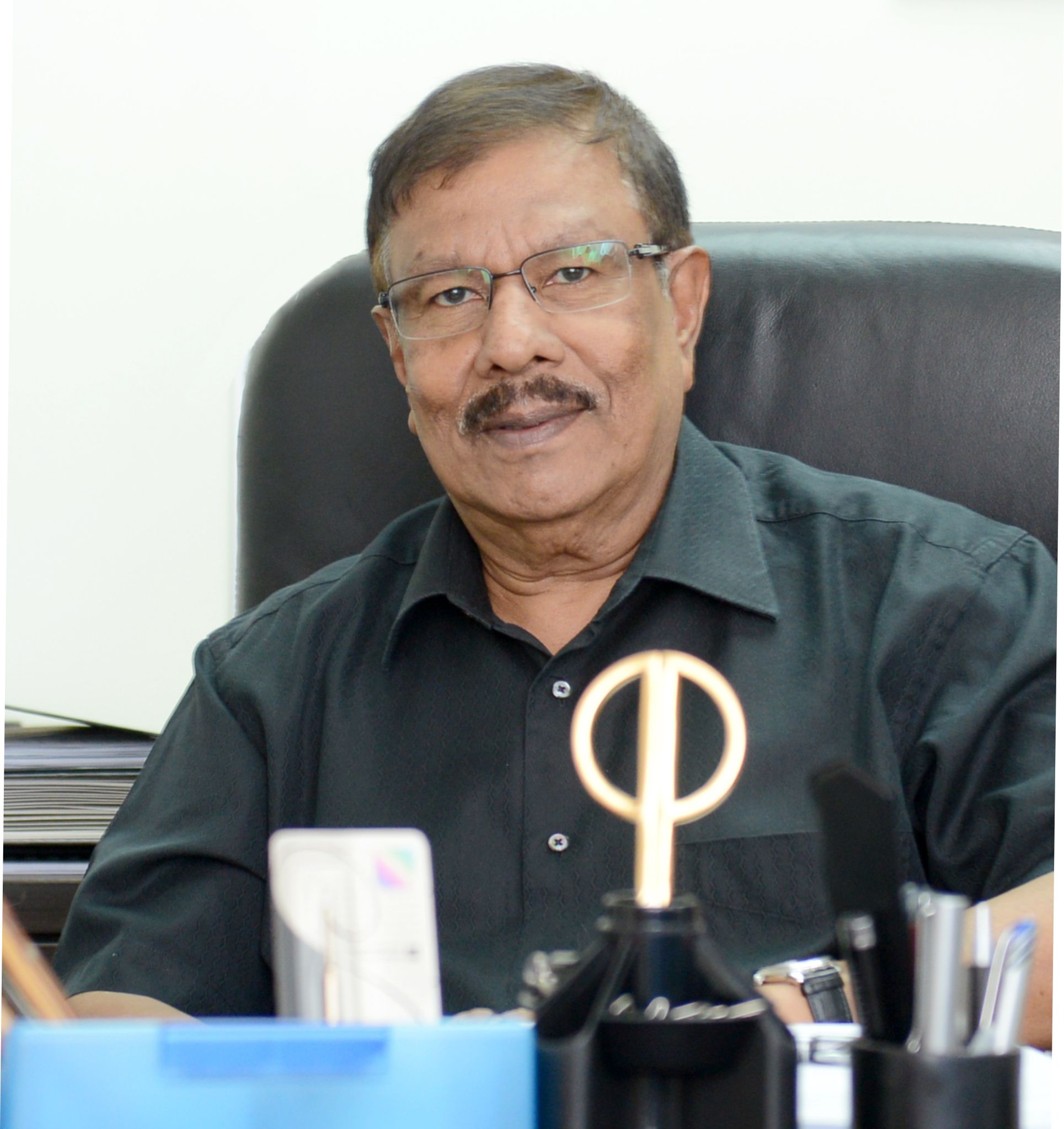
Mr. M.U. Maniku (Chairman, MATI)

The World Bank In Maldives
A partner of the World Bank since 1978, Maldives has been a development success story of sustained growth and impressive improvements in health and education. The country faces a number of environmental, climate, and inclusion challenges that we're working together to help address.
- Country Context
At a Glance
Maldives, a country of around 550,000 people dispersed across 185 islands, is an upper-middle-income country with a robust growth trajectory. The economy has maintained its strong growth momentum in 2023 due to rising tourist arrivals, and, with rising tourist arrivals, is expected to maintain a strong growth and poverty reduction trajectory. Overall, sustained growth performance in the last decade has significantly reduced poverty, and Maldives performs well on poverty outcomes compared to its regional, income, and small island peers. The economy is heavily dependent on tourism which has been the main driver of economic growth in Maldives and the dependence on tourism makes the country highly vulnerable to macroeconomic and external shocks. Commodity price volatility is exerting pressure on external and fiscal balances, through costlier imports and higher subsidies. In addition, existing high debt stock of the public sector, elevated levels of spending the government’s aim to undertake sizeable infrastructure investments through external non-concessional borrowing, and the presence of blanket subsidies for major consumption items have led Maldives to be exposed to elevated fiscal vulnerabilities. Public debt is expected to remain high, warranting continued efforts to reduce fiscal deficits, including comprehensive subsidy and public investment management reforms while mitigating impacts on the vulnerable.
Key Conditions and Challenges
Tourism, which accounts for almost one-third of the economy, has maintained its robust growth performance in the first half of 2023. Despite the Russian invasion of Ukraine, arrivals from Russia remain strong. An earlier-than-expected reopening of the Chinese market in January has compensated for fewer tourists from India and Gulf countries, while arrivals from Europe remained high. This supported employment opportunities, which are particularly important for the poorest. However, heavy reliance on tourism and limited sectoral diversification remain key structural challenges as Maldives is highly vulnerable to macroeconomic shocks.
As an economy that is heavily import-dependent, Maldives is facing significant external and inflationary pressures due to the sharp rise in global commodity prices. This is negatively affecting public finances given the government’s blanket provision of subsidies to help contain domestic price increases. This is further compounded by continued high capital expenditure and public debt, an increasing wage bill, and a costly health insurance scheme. Targeted austerity measures could mitigate risks to vulnerable households, particularly in the atolls, where 93 percent of the poor live, as past welfare gains have been driven by a strong redistributive model. The latter includes universal access to basic health and education services, pensions, health insurance, and income support programs – which contribute to a larger share of income for poorer households. Additional challenges to welfare include differential access to economic opportunities in Male relative to atolls – mirrored by a higher Gini index over the whole population (29.3) than within Male (25.2), higher vulnerability among the self-employed, and overcrowding affecting poorer urban households.
To promote development, Maldives has scaled up infrastructure investments since 2016. Although these investments have contributed towards growth and better living standards, financing of these large investments through non-concessional sources has led to growing debt vulnerabilities. Despite an increased cost of external borrowing, the government continued to use foreign financing for infrastructure investments in 2023, while also relying on domestic borrowing to support recurrent spending. This has led to a concerning rise in the financial sector exposure to the sovereign. The debt stock and debt servicing risks are expected to remain high in the medium term.
Recent Economic Developments
The economic growth, in real terms, was 13.9 percent (y-o-y) in 2022, followed by a 5.5 percent (y-o-y) in Q12023. The robust growth performance has led to a higher income than the pre-pandemic level, translating into projected poverty rates below 2019 levels Tourist arrivals reached 1.2 million by August 2023 and are projected at 1.9 million in 2023 – 13.8 percent higher than in 2022. However, along with the Goods and Services Tax (GST) increase in January 2023, higher global commodity prices led to rising domestic inflation, which reached an average of 3.5 percent (y-o-y) in H12023 – higher than the historical average of 0.5 percent. Price increases were particularly acute in the food -climbing to 8.0 percent in March before falling to 4.5 percent in June-, transport, health, and restaurant services sectors.
Despite growth in tourism earnings, the current account deficit doubled to 16.5 percent of GDP in 2022, due to far costlier oil imports and capital imports for large investment projects. High import costs and external debt repayments put significant pressure on gross reserves, which fell from US$790 million in January to US$594.1 million in July (from 2.8 to 2.0 months of imports).
Public finances remain under pressure. Given subsidy reforms were not implemented and capital spending cuts have not happened – both of which were proposed in the 2023 Budget – spending rose in 2023. However, this was somewhat offset by higher tax collections owing to the robust growth and increased tourism GST. Consequently, the 12-month rolling fiscal deficit declined in May to an estimated level of around 11 percent of GDP compared to 14.2 percent in 2022. MMA’s asset exposure to government further rose to 52 percent of its total financial assets at mid-2023, from 47.3 percent in 2022.
Outlook, Risks, and Challenges
The economy is projected to grow by 5.6 percent on average in the medium-term, supported by robust tourism performance. The return of Chinese tourists, together with increasing arrivals from new and existing markets are expected to lead to sustained growth. Tourism will further be supported by the expansion of Velana International Airport (planned to be completed by 2025), a diversified tourism sector, and investments in new resorts.
Despite the recent increase in GST collections, in the absence of fiscal reforms, any meaningful improvement in the fiscal balance will be offset by continued high levels of spending. Public debt will, therefore, remain high. A larger fiscal adjustment is required to build external buffers and reduce fiscal vulnerabilities, including reducing spending on untargeted subsidies and bulk procurement for pharmaceutical purchases, and more effective public investment management. Better targeted transfers – including redirecting inefficiently allocated resources– would help mitigate the negative impacts of subsidy reforms on the poor.
High levels of consumption, elevated global commodity prices, and the GST rate hike are projected to keep inflation above the historical average in the medium term. Without targeted support, higher prices passed onto households could worsen the poverty outlook. Therefore, future subsidy reforms need to be carefully designed to minimize welfare risks.
The current account deficit is expected to remain elevated. High commodity prices and necessary capital imports driven by the government’s ambition to complete ongoing and planned infrastructure projects and commence projects in outer Atolls are expected to lead to a high current account deficit over the medium-term. Volatile oil prices and rising external financing needs – including debt servicing – are expected to sustain pressure on official reserves.
Downside risks persist. Tourism could be adversely impacted by an extended global slowdown. Any further widening of current account deficit could put additional pressure on reserves. Government faces external debt servicing payments of US$570 million on average over the next two years amidst tighter global financing conditions. On the upside, the global tourism sector outlook is robust, and with strong economic growth, poverty rates are expected to decline.
Reforms are needed to improve the fiscal outlook and ensure debt sustainability. More effective revenue mobilization measures, coupled with reforms to Aasandha national health insurance scheme and existing subsidy programs, and better investment management are critical to bring down the high level of public debt, replenish fiscal buffers against future shocks, and lower the cost of growth-enhancing investments, especially with large debt service obligations coming due in 2026.
Last Updated: Oct 04, 2023
World Bank Program in Maldives
Maldives became a member of the World Bank in 1978 and has enjoyed a trusted partnership with the institution over the past 44 years. Working together, the country has implemented various projects in support across many development areas.
Maldives has an active portfolio of 12 projects – 11 International Development Agency (IDA) projects, 1 IDA guarantee and 1 regional project – with a total net commitment of $258 million. The projects are focused on fisheries, solid waste management, renewable energy, employment and social protection, urban development, COVID-19 response, digital development, youth resilience, health systems, and financial management.
The World Bank also provides analytical support in macro monitoring and analysis, financial sector, youth and gender, health financing, social protection, and poverty.
The World Bank’s new Country Partnership Framework (2023-2027), adopted in January 2023, aims to help the Maldives navigate through risks and vulnerabilities to reach a greener, more resilient, and inclusive high-growth future. Under the new CPF, the World Bank’s engagement with the Maldives focuses on improving resilience to shocks, increasing access to economic opportunities, and improving human capital outcomes. Deepening the digital economy, to accelerate economic transformation, is also a cross cutting theme.
IFC Collaboration
Maldives joined the International Finance Corporation (IFC), in 1983. Since then, IFC has invested nearly $250 million. Currently, the portfolio in Maldives is $53 million with commitments in Dhiraagu, Bank of Maldives (BML) and Housing Development Finance Corporation (HDFC).
In response to the COVID-19 crisis and in line with its strategic priorities in Maldives, IFC had pivoted resources to support key sectors adversely impacted by the pandemic. At the request of the Government, and in line with IFC’s countercyclical role, support to the Maldives with liquidity access was provided in the early stage of the pandemic. IFC’s investment of $50 million in BML provided financing for private sector companies and small and medium sized businesses in the tourism sector, to help preserve jobs and combat the negative shocks of COVID-19 on the economy. IFC also invested over $50 million directly in the tourism sector in FY20 via its investment in John Keels Holdings and $22.4 million through the Crescent Fund in FY23. Further, a $35 million landmark investment in Dhiraagu (in FY22/23), the largest telecommunications and digital service provider in the country, is helping Maldives digitize faster.
IFC’s strategy for FY21-25 in Maldives revolves around 3 pillars: sustainability, inclusion, and connectivity anchored by the tourism sector. IFC is committed to helping the Maldives achieve its ambitious target of net-zero emissions by the year 2030 through sustainable growth by increasing the use of renewable energy, further greening resorts, building climate resilient infrastructure, and enhancing sustainable waste management. Physical and digital connectivity also remain key strategic priorities along with accelerating SOE reforms. Achieving these strategic priorities will require close collaboration with the World Bank. IFC is also actively seeking to partner with other DFI’s, specifically to mobilize financing to further strengthen the Maldivian economy.
Supporting COVID-19 response: The COVID-19 Emergency Response and Health Systems Preparedness Project continues to support the Government in early detection, contact tracing, quarantine and isolation, and case management, while strengthening health systems to better respond to potential health crises.
Accelerating clean energy transition: The Accelerating Sustainable Private Investment in Renewable Energy (ASPIRE) and Accelerating Renewable Energy Integration and Sustainable Energy (ARISE) projects are pivotal in driving energy sustainability in the Maldives. ASPIRE, launched in 2014, has successfully mobilized private sector investments in photovoltaic infrastructure, marking a significant financial influx. Expanding on this triumph, ARISE, initiated in 2021, incorporates IDA/MIGA guarantee mechanisms to scale renewable energy, storage, and grid upgrades. Together, the projects are poised to unlock substantial private sector funding, propelling the Maldives towards its renewable energy objectives while underlining the importance of well-designed projects in advancing sustainability.
Protecting natural resources and strengthening nature-based industries: The World Bank's IDA support is helping island communities in enhancing local waste management, recycling, and re-use practices, including plastics. A new Transforming Fisheries Sector Management in South-West Indian Ocean Region and Maldives (TransFORM) Project will support improved biosecurity systems, decarbonization, improved implementation of management plans, and enhanced competitiveness and private sector participation for improving business climate in the fisheries sector. The Maldives Country Environmental Assessment (CEA), due for launch soon, will offer valuable insights into coastal resilience, sustainable development, and the tourism sector's environmental impact. Similarly, the Maldives Country Climate Development Report (CCDR) highlights the interconnection of climate change and development. It aims for completion within the next year, contributing to climate action and resilience building in the Maldives.
Preparing youth for the modern labor market: The Maldives Enhancing Employability and Resilience of Youth Project (MEERY) enhances the long-term capacity of the education and skills development, and entrepreneurship systems to produce new graduates in priority skills and fortify the resilience of youth to labor-market cycles. The Sustainable and Integrated Labor Services (SAILS) project aims to enhance the resilience and employability of Maldivian workers by establishing a comprehensive social insurance program and integrated labor market services.
Strengthening public financial management: With the Bank’s support , the Ministry of Finance has made considerable progress on improving transparency through making the budget and financial information available through an integrated financial management system.
Accelerating digital development: A new Digital Maldives for Adaptation, Decentralization and Diversification project is helping the government promote competition in the broadband market, modernize the national identification systems to facilitate online services and transactions, and improve climate-related data and analytics.
Strengthening the private sector and reforming SOEs: A new Maldives Competitiveness and Growth Project will help the government enhance private participation and critical reforms in selected SOEs and support the growth of private small and medium enterprises through increased access to commercial loans and technical support.
Maldives : Commitments by Fiscal Year (in millions of dollars)*

STAY CONNECTED
Additional resources, highlights and resources, country office contacts.
This site uses cookies to optimize functionality and give you the best possible experience. If you continue to navigate this website beyond this page, cookies will be placed on your browser. To learn more about cookies, click here .
- Personal Finance
- Today's Paper
- Partner Content
- Entertainment
- Social Viral
- Pro Kabaddi League
Maldives as tourist hub: Its history and what lies ahead for island nation
Maldives, with a population of 550,000 people dispersed across 185 islands, has become a popular tourist hub in the last five decades and today attracts about 25% of its gdp directly from tourism.
)
Maldives' annual GDP is largely driven by its tourism sector, which accounts for about 25 per cent of total share.
Listen to This Article
Maldives' history as tourist destination, maldives tourism: boon and a bane, maldives' envoy summoned by govt amid diplomatic row over ministers' remark, easemytrip suspends flight bookings to maldives over tourism row with india, live: amid maldives row, makemytrip launches 'beaches of india' campaign, iit bombay: 85 students secure salary packages worth over rs 1 crore, meta enables 'link history' on facebook: what it is and how-to disable it, earth's rotation day 2023: date, history, importance, and more facts, maldives prez muizzu arrives in china, set to sign several agreements, with a week to go for iowa's caucuses, donald trump appears strong, runway at tokyo's haneda airport reopens a week after fatal collision, iphone sales slump in china, volumes to decline further, says jefferies, maldives may 'disappear' by 2100.
Don't miss the most important news and views of the day. Get them on our Telegram channel
First Published: Jan 08 2024 | 12:35 PM IST
Explore News
- Suzlon Energy Share Price Adani Enterprises Share Price Adani Power Share Price IRFC Share Price Tata Motors Share Price Tata Steel Share Price Yes Bank Share Price Infosys Share Price SBI Share Price Tata Power Share Price HDFC Bank Share Price
- Latest News Company News Market News India News Politics News Cricket News Personal Finance Technology News World News Industry News Education News Opinion Shows Economy News Lifestyle News Health News
- Today's Paper About Us T&C Privacy Policy Cookie Policy Disclaimer Investor Communication GST registration number List Compliance Contact Us Advertise with Us Sitemap Subscribe Careers BS Apps
- Budget 2024 Lok Sabha Election 2024 IPL 2024 Pro Kabaddi League IPL Points Table 2024

Sustainable Tourism in Maldives
Sustainability and Climate Change are now a key focus in the travel and tourism industry becoming an intrinsic part of the post pandemic tourism rebound. More than 300 tourism stakeholders recently signed up to the Glasgow Declaration on Climate which recognizes the urgent need for a globally consistent plan for climate action in tourism.
Sustainable tourism is a concept that covers the complete tourism experience and is defined by the UN Environment Program and UN World Tourism Organization as “tourism that takes full account of its current and future economic, social and environmental impacts, addressing the needs of visitors, the industry, the environment and host communities.”
When responsibly planned and managed, tourism can support job creation, promote inclusive social integration, protect natural and cultural heritage, conserve biodiversity, generate sustainable livelihoods and improve human wellbeing. However, tourism is also vulnerable to climate change while at the same time contributing to it. A suitable balance must be established between the three dimensions of economic, environmental and social aspects to guarantee its long-term sustainability.
The aim of sustainable tourism is to increase the benefits and to reduce the negative impacts caused by tourism for destinations. This can be achieved by:
- Protecting natural environments, wildlife and natural resources when developing and managing tourism activities
- Providing authentic tourist experiences that celebrate and conserve heritage and culture
- Creating socio-economic benefits for communities through employment and income earning opportunities
The demand for sustainable tourism is notable. Research by Booking.com showed that 69 per cent of global travellers anticipate that the travel industry will offer more sustainable travel options. ABTA’s 2020 Holiday Habits research shows that half of the customers now consider sustainability when choosing a holiday, with 70 per cent stating plastic and plastic pollution was a defining factor. That’s three times as many as ten years ago, showing a definite trend in the eco-conscious mindset of holiday makers. The Maldives, as one of the worlds luxury destinations, has reacted to this market change, and is becoming a leader in sustainable and eco-friendly tourism, introducing innovative ways to mitigate their impact on the environment which sustains them.
Tourism is the largest industry in the Maldives, drawing visitors from all over the world, attracted by the promise of white sand, clear blue waters and abundant marine life. As the world’s lowest-lying country, these collections of sand will also be the first to be affected by global warming and the resulting effect on the oceans such as rising sea levels and coral bleaching.
The industry plays a major role in sustainability and climate change, from the carbon emissions of the transport methods transporting people around the atolls, to the luxurious furnishings, fittings, equipment, and provisions required to sustain them, plus the effect of the activities and numerous ancillary services. A vast amount of these services and items are derived from plastic which contribute to an ever-growing waste mountain, as once these luxury goods arrive in the Maldives there are limited resources to effectively dispose of them! Research shows that tourists, as well as the services provided to them, are the single highest generator of waste per capita.
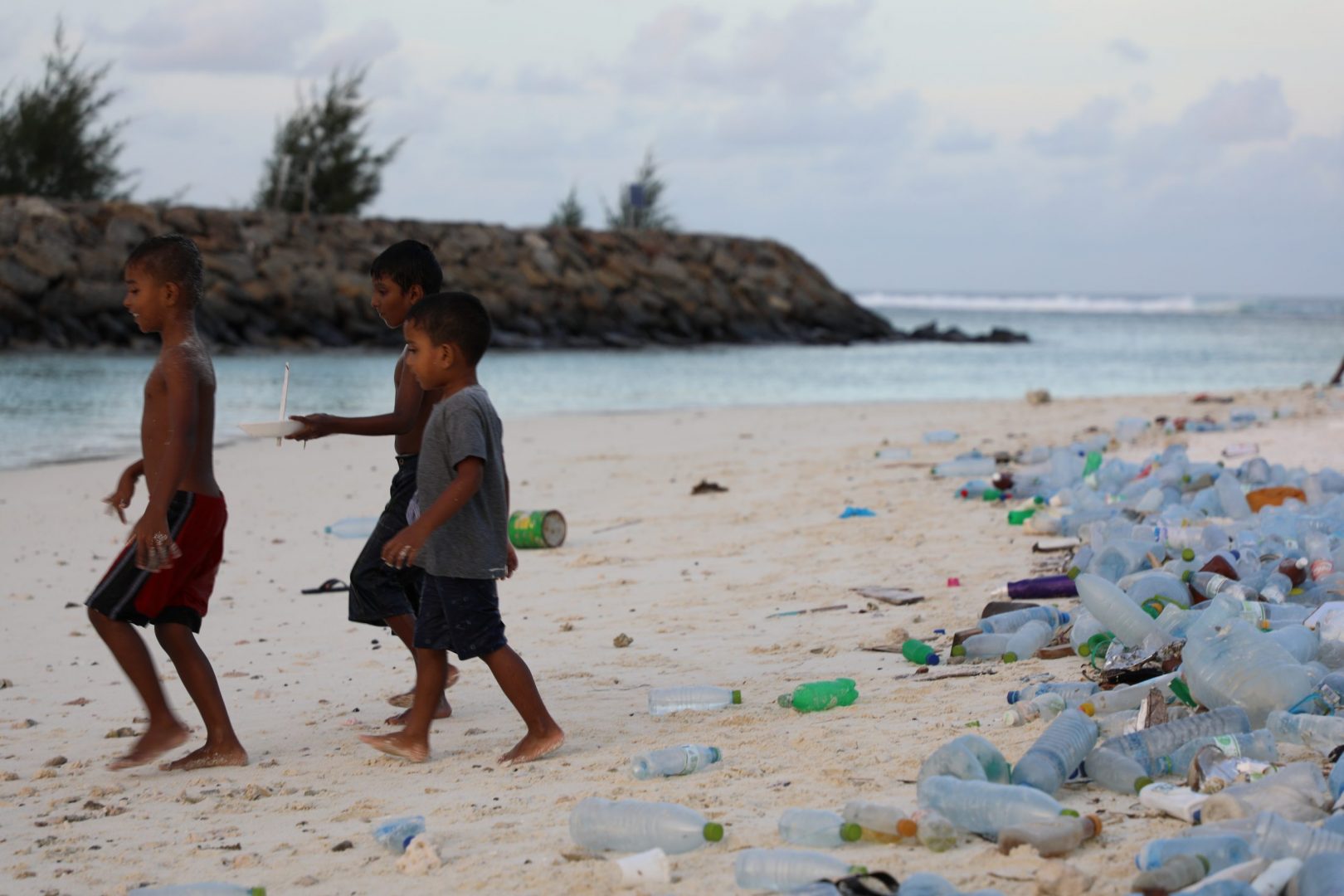
The MOPA (Maldives Ocean Plastics Alliance), NIG report details that plastics make up 12 percent of all waste produced in the Maldives annually, roughly 43,134 tonnes and estimates that solid waste is generated at a rate of 1.8 kg per person per day in Malé, 0.8 kg per person per day on the other inhabited islands, and 3.5 kg per person per day in resort islands. The rise in guesthouses and tourists on local islands has increased volume of rubbish generated and has emphasised the limited infrastructure for the management of wastewater and solid waste that the Maldives has.
The World Bank is working in partnership with the government to help with reducing the amount of waste, particularly plastic waste, as well as composting the high-volume household waste generated throughout the country through a variety of projects.
The “Greater Male’ Environmental Improvement and Waste Management Project” by the Environment Ministry is funded by the Asian Development Bank (ADB). The aim is to establish a sustainable solid waste management system for the Greater Male’ capital region and its inhabited outer islands. The project will establish a Regional Waste Management Facility (RWMF) with a waste-to energy treatment plant in Thilafushi.
The Maldives government actively encourage all the tourism sectors towards sustainability resulting in tourism providers partnering with notable organizations such as:
- Green Fins, a global initiative to reduce the environmental impact of marine tourism.
- Manta Trust, a UK based, independent non-profit organisation whose mission is to advance the conservation of manta rays and their habitats,
- Olive Ridley Project, which protects sea turtles in the Indian Ocean through research, education, and rehabilitation.
- Parley, an international NGO which, works to boost recycling and reduce plastic waste throughout the islands of the Maldives
The Government, local communities, and the tourism industry as a whole, are taking conscious steps to create more sustainable and eco-friendly products implementing a plethora of initiatives and activities to limit the damage to the environment and address the ecological impact of the tourists. These include:
- Parley collection points for PET plastic bottles which are then sent for recycling
- Bottling of water in reusable glass bottles
- Using natural insecticides to mitigate the use of toxic chemicals
- Solar panels and solar energy
- Trained marine biologists and conservation teams who conduct coral reef research, coral propagation, reef rehabilitation and look after coral nurseries.
- Education programs to provide guests with the opportunity to learn about conserving the oceans, sustainable living and the local fauna and flora
- Community initiatives to support their local islands by funding projects or supporting NGO’s and their programs
- Documented green practices and sustainable initiatives that are recognised by Earth Check, Green Globe and Conde Nest.
- Sustainability Labs that recycle plastic waste from the resort and surrounding communities into souvenirs and bricks, others turn recycled ocean plastic into models using 3D printers
- Gardens, farm areas, hydroponic areas, and orchards where produce is grown and supplied to the kitchens
Community education-programmes have also been created by resorts and non-governmental organisations to educate locals on sustainability. These programmes include a range of activities, including conducting regular beach and reef clean-ups on local islands, developing renewable energy sources, educating locals on practicing responsible fishing, and much more.
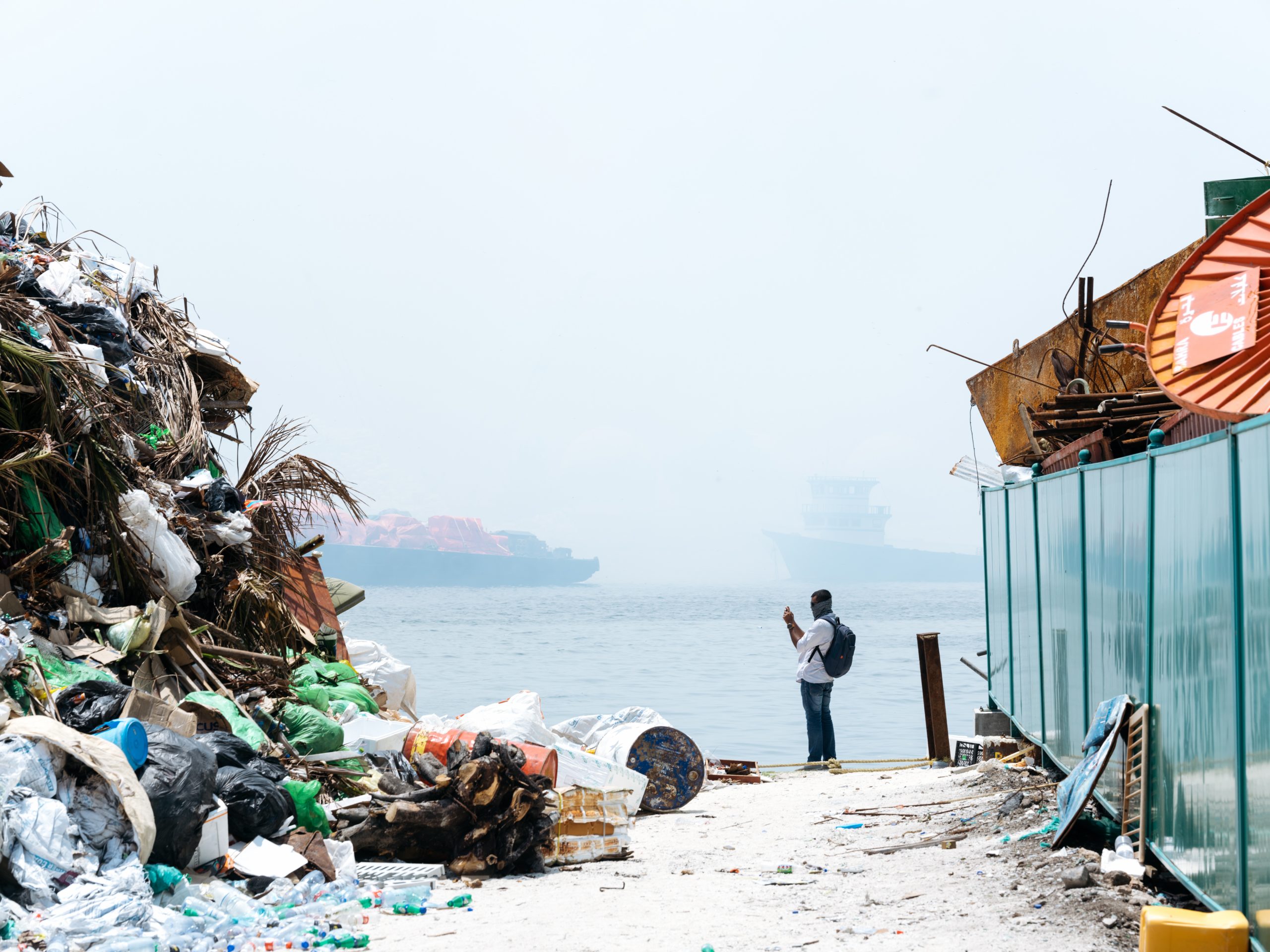
Sustainability initiatives are not confined to resorts, more local tour operators are designing packages with sustainability and the local community as its heart.
The quest for sustainable and more eco friendly measures is not without challenges as the Maldives waste management provision is still in its infancy. Biodegradable or compostable containers often require specialist equipment to facilitate the necessary enzyme activity which are not readily available. Containers and bags which cannot be recycled or composted, are either burnt which adds to smoke emissions or they join the ever-growing waste mountain. This is especially a challenge for local islands or safari boats who have limited means of disposal.
Regulations state that resorts must have a dedicated waste management centre which should have a storage area, treatment facilities such as incinerators, compactors, and bottle crushers. Most organic waste was disposed of at sea. However, that clause in the regulation was repealed in November 2021 due to the inability of people to effectively segregate waste, which resulted in waste that was not biodegradable being thrown into the sea and adding to the unsightly pollution being washed up on beaches, which subsequently attracted flies.
Until the Maldives can implement effective methods to transport, dispose of or recycle its waste it will continue to make its way into the ocean and contribute to the destruction of the environment unless everyone makes a conscious effort to play a positive role in its prevention.
“We still have a really good chance to make things better than they are. They won't get better unless we take the action and inspire others to do the same thing. No one is without power. Everybody has the capacity to do something.” - Dr. Sylvia Earle
Read the previous article: The Blue Economy and Climate Change
Related Posts

What makes Maldives the best wedding destination?
[vc_row][vc_column][vc_column_text]What makes a great wedding day? Is it great food, drinks, music and the right guests? Yes, yes and yes. But there is something much more important to make your wedding day more memorable. It’s the location that counts most when it comes to planning the big day. Of course, everyone wants their big day […]

Vamoos, Contactless Hospitality and the ‘New Normal’
The COVID-19 crisis has fundamentally changed how our society runs, resulting in unprecedented challenges in the way we interact and go about our daily lives. In the travel and tourism sector, social distancing restrictions pose a unique problem for hoteliers and accommodation providers, who must now adapt to this new reality while ensuring the health […]

Keiretsu will be Technology Partner for GM Forum 2019
[vc_row][vc_column][vc_column_text]The Maldivian company leading the wave of technology in the hotel industry, Keiretsu will be the Technology Partner of the upcoming GM Forum 2019. Keiretsu and its brands form one of the largest integrated portfolios in the Maldives. As one combined company, Keiretsu has the best-in-class technologies and service capabilities across systems integration, guest room […]
Please register or sign in to continue.
Register and enjoy free, unlimited access to Hotelier Maldives website.
- Topics ›
- Tourism worldwide ›
The Most Important Markets for the Maldives Tourism Industry
Tourism & hospitality.
From newly elected Maldivian president Mohamed Muizzu planning for Indian military personnel to leave the island and government officials insulting Indian Prime Minister Narendra Modi on X/Twitter due to a perceived slight to the trending hashtag #BoycottMaldives: The relationship between the two nations seems to have taken a downward turn over the last couple of months. As our chart based on data by the Maldives Ministry of Tourism shows, India has been the biggest source of tourist influx in the past year.
Between January 1 and December 31 of 2023, 209,198 Indians visited the smallest country in Asia , comprised of 26 atolls and situated 750 kilometers from the Indian coast. Russia is second in terms of tourist visits to the Muslim-majority island republic, followed by China. The latter climbing 27 spots compared to 2022 can be seen as one symptom of the deepening economic and political ties between the Maldives and the People's Republic. Other relevant origin countries for tourists visiting the atolls are the United Kingdom, Italy and Germany.
The online spat between the Indian and Maldivian netizens already seems to have a palpable impact on tourism. As vice president and global head of marketing at the India-based travel software company Rategain, Ankit Chaturvedi, told CNBC on Tuesday: "We are seeing a 40 percent drop in bookings over the last two days. Most people book on weekends, and therefore the drop seems more significant because ideally [bookings] should have gone up." Tourism is an integral part of the Maldivian economy. The sector makes up more than one quarter of the island nation's economy, followed by fishing and shipping.
Description
This chart shows the countries with the most tourists traveling to the Maldives.
Can I integrate infographics into my blog or website?
Yes, Statista allows the easy integration of many infographics on other websites. Simply copy the HTML code that is shown for the relevant statistic in order to integrate it. Our standard is 660 pixels, but you can customize how the statistic is displayed to suit your site by setting the width and the display size. Please note that the code must be integrated into the HTML code (not only the text) for WordPress pages and other CMS sites.

Infographic Newsletter
Statista offers daily infographics about trending topics, covering: Economy & Finance , Politics & Society , Tech & Media , Health & Environment , Consumer , Sports and many more.
Related Infographics
Official development assistance, how is the oecd's development aid used, ocean health, which countries rank best and worst on the ocean health index, sponsored post by booking.com, offline hotel bookings defy digitalization, the evolution of air travel, solar eclipse, solar eclipses to hit major u.s. metros within the century, sponsored post by booking.com, social media shapes travel experiences, top 10 nature destinations in southeast asia, the how of improving social cohesion with local tourism, european hospitality sector experiences unprecedented levels of bankruptcies, top 10 history and culture destinations in southeast asia, leading challenges for the japanese accommodation industry, effective policies for reducing tourism-related emissions.
- Who may use the "Chart of the Day"? The Statista "Chart of the Day", made available under the Creative Commons License CC BY-ND 3.0, may be used and displayed without charge by all commercial and non-commercial websites. Use is, however, only permitted with proper attribution to Statista. When publishing one of these graphics, please include a backlink to the respective infographic URL. More Information
- Which topics are covered by the "Chart of the Day"? The Statista "Chart of the Day" currently focuses on two sectors: "Media and Technology", updated daily and featuring the latest statistics from the media, internet, telecommunications and consumer electronics industries; and "Economy and Society", which current data from the United States and around the world relating to economic and political issues as well as sports and entertainment.
- Does Statista also create infographics in a customized design? For individual content and infographics in your Corporate Design, please visit our agency website www.statista.design
Any more questions?
Get in touch with us quickly and easily. we are happy to help.
Feel free to contact us anytime using our contact form or visit our FAQ page .
Statista Content & Design
Need infographics, animated videos, presentations, data research or social media charts?
More Information
The Statista Infographic Newsletter
Receive a new up-to-date issue every day for free.
- Our infographics team prepares current information in a clear and understandable format
- Relevant facts covering media, economy, e-commerce, and FMCG topics
- Use our newsletter overview to manage the topics that you have subscribed to
Maldives Tries to Win Back Indian Tourists As Arrivals Fall 40%
Peden Doma Bhutia , Skift
April 16th, 2024 at 9:11 AM EDT
While Maldives enjoys record-breaking arrivals, its tourism companies aren't about to let the Indian market keep falling. They're on a mission to reverse the trend.
Peden Doma Bhutia
The Maldives Association of Travel Agents and Tour Operators is determined to increase Indian arrivals to the island destination and is taking steps to achieve this.
“Indian arrivals to the Maldives have gone down by almost 40%,” said Abdulla Ghiyas, the association’s president, in an exclusive interview with Skift.
In early January, #BoycottMaldives started trending in Indian social media following a diplomatic dispute between the two countries. Indians accused Maldivian politicians of making disparaging remarks against Prime Minister Narendra Modi.
As a result, India, which was the number 2 source market for Maldives, has now fallen to number 6 . India’s share of visitors had been almost 11% – it has shrunk to 5.6%.
Promotions in Indian Cities
Ghiyas said the association will be hosting roadshows in 3 Indian cities in July and confirmed to Skift that one of the cities would be Bengaluru.
The association also plans to engage with Indian social media influencers. “We also want to see how we can work with the tourism board in Maldives as we have partnered with them in the past as well. There are talks that the tourism board is also planning of doing something in India,” Ghiyas said.
At the July roadshows, he said he’s keen to look at cities that have direct connectivity with Maldives.
Ghiyas expressed a desire to have conducted the roadshow earlier, noting that May is when Indian outbound travel peaks. However, he mentioned plans for another round of roadshows towards the end of the year, aiming to include Tier 2 cities. “Even if they lack direct flights to the Maldives, these cities would represent an important market for us,” he said.
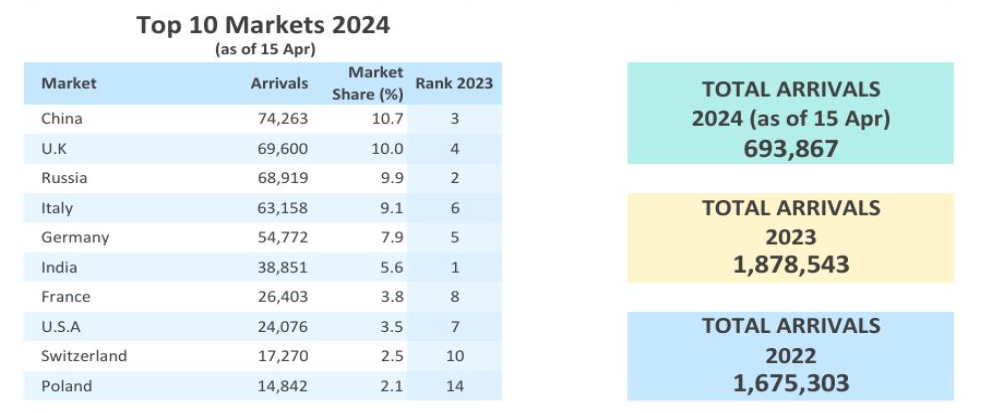
Maldives has so far received (from January 1-April 15) 693,867 tourists, up from 606,395 arrivals for the same period last year, as per the latest data from the Maldives tourism ministry.
China is the top source market for the island destination, followed by UK and Russia.
Between January 1-April 15, almost 39,000 Indians visited Maldives, a decline of almost 40%, compared to the 64,250 arrivals for the same period last year.
“We might not talk immediately about the growth scenario, but I would definitely like to see the 40% decline narrow down,” Ghiyas said.
Can’t Ignore India
While Maldives has experienced record-breaking tourism arrivals so far, Ghiyas said it still needs India. “There are properties and resorts that rely heavily on the Indian market, which have been severely affected. This will hurt us in the long term and that is why we have decided to engage with the India market.”
Aminath Suzan, CEO of Maldives Association of Travel Agents and Tour Operators, pointed to cultural ties, such as similarities in food, language, and pop culture. “We must ensure that unrelated matters do not negatively impact the bond, for which we have dedicated years and built this alliance.”
MATATO Meets with Indian High Commissioner to Foster Tourism Cooperation The Maldives Association of Travel Agents and Tour Operators (MATATO) engaged in a productive meeting with His Excellency Munu Mahawar, the Indian High Commissioner to the Maldives, to explore collaborative… pic.twitter.com/PNXiy3QdVz — MATATO – PATA Maldives Chapter (@matatoMV) April 9, 2024
The association members also recently met with Munu Mahawar, the Indian high commissioner in Maldives, to collaborate closely with his office to boost tourism initiatives.
Dubbing the meeting with Mahawar “positive,” Ghiyas said the high commission has offered assistance to the association. “Once we have a concrete plan, we will definitely follow up with the High Commission and share our plans.”
Skift India Report
The Skift India Report is your go-to newsletter for all news related to travel, tourism, airlines, and hospitality in India.
Have a confidential tip for Skift? Get in touch
Tags: asia monthly , china , india outbound , islands , maldives , social media , tourism marketing
Photo credit: Ritz Carlton Maldives Fari Islands. Fari Islands

Indian tourist arrivals to Maldives drop by over 50 per cent
A ccording to the March 2024 data released by the Maldives government, Indian tourist arrivals to Maldives have plummeted by over 50 percent compared to the same month in the previous year.
In March 2023, 18,099 Indian tourists travelled to the country, whereas in March 2024, the number dwindled to a mere 8,322—a stark 54 per cent decrease. This downward trend is not limited to a single month; it extends across the first quarter of 2024, with only 34,847 Indian tourists visiting Maldives from January to March, compared to 56,208 during the same period in 2023.
Also Read | North Korea conducts cruise missile warhead test
The decline in Indian tourist arrivals coincides with a period of strained diplomatic relations between India and Maldives, largely attributed to the policies of Maldives President Muizzu.
Also Read | Volkswagen workers in Tennessee vote overwhelmingly for unionization
President Muizzu, who came to power in November 2023, has pursued a more China-centric approach, advocating for reduced reliance on India and has called for the removal of Indian military personnel stationed in the country involved in humanitarian support.
Watch | Myanmar Junta, Armed rebels clash | Elon Musk postpones India visit
In contrast to the decline in Indian arrivals, China has emerged as the leading contributor to Maldives' tourism industry. Chinese tourist arrivals have seen a remarkable surge, with 13,608 Chinese tourists visiting Maldives in March 2024—a staggering 78.6 percent increase compared to March 2023.
China contributes the largest number of tourists to Maldives, while India is at sixth. Indians formed the largest number of tourist groups in Maldives till December 2023. In March 2024, Russians formed the second largest number of tourist groups travelling to the South Asian country, followed by the UK, Italy, and Germany.
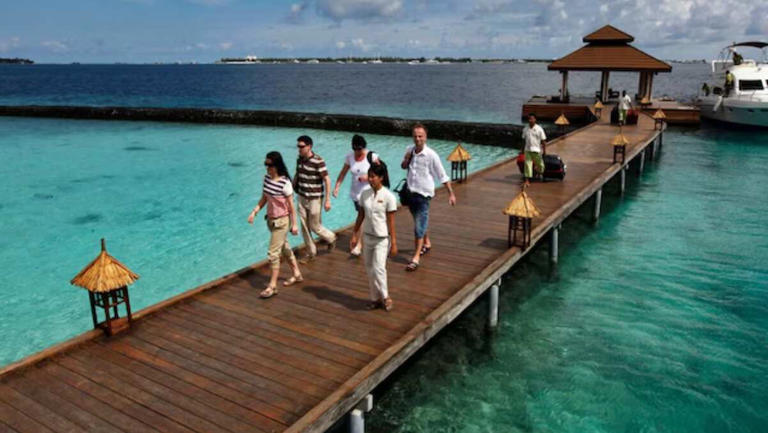
- Work & Careers
- Life & Arts
Become an FT subscriber
Try unlimited access Only $1 for 4 weeks
Then $75 per month. Complete digital access to quality FT journalism on any device. Cancel anytime during your trial.
- Global news & analysis
- Expert opinion
- Special features
- FirstFT newsletter
- Videos & Podcasts
- Android & iOS app
- FT Edit app
- 10 gift articles per month
Explore more offers.
Standard digital.
- FT Digital Edition
Premium Digital
Print + premium digital, weekend print + standard digital, weekend print + premium digital.
Today's FT newspaper for easy reading on any device. This does not include ft.com or FT App access.
- 10 additional gift articles per month
- Global news & analysis
- Exclusive FT analysis
- Videos & Podcasts
- FT App on Android & iOS
- Everything in Standard Digital
- Premium newsletters
- Weekday Print Edition
- FT Weekend Print delivery
- Everything in Premium Digital
Essential digital access to quality FT journalism on any device. Pay a year upfront and save 20%.
- Everything in Print
Complete digital access to quality FT journalism with expert analysis from industry leaders. Pay a year upfront and save 20%.
Terms & Conditions apply
Explore our full range of subscriptions.
Why the ft.
See why over a million readers pay to read the Financial Times.
International Edition
MMPRC promotes the Maldives at Kazakhstan International Travel Fair 2024

Categorized
What are you looking for?
- Tata Steel share price
- 165.85 -1.04%
- Kotak Mahindra Bank share price
- 1,608.40 -2.11%
- Wipro share price
- 464.65 0.79%
- ITC share price
- 439.95 0.56%
- Tech Mahindra share price
- 1,277.45 7.34%
Indian tourists ditch Maldives amid row as numbers drop 40%; China arrivals up 200%
A report by the maldives' ministry of tourism showed that as many as 56,208 indian tourists had visited maldives between january and march 2023. this number declined to 34,847 in the january-march 2024 period..

The number of tourists from India to the Maldives declined by almost 40 per cent during the January-March 2024 period as compared to the data from the same period in 2023. At the same time, the total number of tourists from China shot up by over 200 per cent.
The Maldives' Ministry of Tourism released its monthly report on tourist arrivals recently. The data showed the tourist arrivals in the island nation between January and March this year.
ALSO READ: How did China strengthen its bond with Maldives amid India exit? 10 key collaborations between Male, Beijing
The report revealed that as many as 56,208 Indian tourists had visited Maldives between January and March 2023. This number declined to 34,847 in the January-March 2024 period. This was a 38 per cent decline from 2023.
Meanwhile, 17,691 tourists from China visited Maldives during January-March 2023. The tally rose to 67,399 during January-March 2024 — recording a spike of 281 per cent.
ALSO READ: Maldives snubs India over hydrographic survey deal after signing military pact with China
As per the latest data, India ranks sixth in the top 10 markets for Maldives tourism, while China ranks No. 1 with an 11 per cent share.
The data holds significance as India once used to be a significant and top-most contributor to the Maldive's tourism statistics. Indians were only second to Russia in the chart showing tourist arrivals in the Maldives by nationality in January-November 2023. The increase in arrivals from India started in 2020, as compared to that from China.
Before 2020, people from China were leading the tourism charts in the Maldives. In 2020, China had an 18.31 per cent share among ‘Top Ten Markets Arrivals’ in Maldives, the highest that year.
India dominated the Maldives tourism market until December last year. Its position started declining starting January 2 this year, when India ranked third among the top 10 countries that make up most of the Maldives' tourism market share. India's rank further plunged to fifth on January 21 and then to sixth on March 3.
Since then , China has steadily climbed the chart from 10th to the first spot.
India-Maldives row
The drop in tourists from India was seen soon after Prime Minister Narendra Modi attempted to promote Laskhwadeep as a tourist destination, triggering a row in the Maldives in the first week of January this year. Later, Maldives' President Mohamed Muizzu requested India to withdraw its troops stationed in the island nation.
The declining number of tourists from India and the subsequent increase in that from China is in line with Muizzu's policies and deals that seem to snub India and welcome China.
Milestone Alert! Livemint tops charts as the fastest growing news website in the world 🌏 Click here to know more.
Unlock a world of Benefits! From insightful newsletters to real-time stock tracking, breaking news and a personalized newsfeed – it's all here, just a click away! Login Now!
Wait for it…
Log in to our website to save your bookmarks. It'll just take a moment.
You are just one step away from creating your watchlist!
Oops! Looks like you have exceeded the limit to bookmark the image. Remove some to bookmark this image.
Your session has expired, please login again.
Congratulations!
You are now subscribed to our newsletters. In case you can’t find any email from our side, please check the spam folder.

Subscribe to continue
This is a subscriber only feature Subscribe Now to get daily updates on WhatsApp

IMAGES
COMMENTS
Tourism is the largest economic industry in the Maldives, as it plays an important role in earning foreign exchange revenues and employing 25,000 people in the tertiary sector of the country. The archipelago of the Maldives is the main source of attraction to many tourists visiting the island country. Chinese entrepreneurs have been swiftly ...
Tourist arrivals plummeted by 67.4% and the economy contracted by 32.9%, the deepest recession on record. This external shock underscored the fragility of the Maldives' economy, which is heavily dependent on tourism and highlighted the urgent need for economic diversification. Historically, fishing and agriculture were the main economic ...
In October 2022, Maldives also marked the highest number of tourist arrivals in a given month in the history of Maldivian tourism, a figure that had not been achieved even in the record-breaking year of 2019. The tourist arrivals were recorded at 1,675,294 on 31st December 2022, and it is a 26.7% increase from the arrivals recorded in 2021.
2022 has been a big year for the Maldivian tourism industry. This small island nation that started its tourism industry with just one resort in 1972, recently celebrated its 50-year anniversary on 3rd October 2022. Along with the celebration of 50 years, the industry achieved major accomplishments this year after facing the hardships of 2020-2021.
India remained the top market for Maldives tourism in 2021 dominating over 22% with 291,787 arrivals. Russia followed closely at second contributing 16.8% with 222,422 tourists. Third, comes Germany contributing 7.2% with 95,358 arrivals. Other top markets include the U.K, U.S.A, Saudi Arabia, Spain, Ukraine, France and Switzerland respectively.
An Overview of the Maldives Tourism Industry in 2023. As 2023 drew to a close, the Maldives celebrated the arrival of 1,878,537 tourists throughout the year, surpassing the set target of 1.8 million arrivals. The milestone of one million tourist arrivals was achieved on 12th August 2023, followed by the 1.8 millionth arrival on 20th December ...
The overall outlook for the Maldives' tourism industry in 2024 is optimistic, with a strong surge in tourist arrivals expected. However, the industry stakeholders and authorities must remain vigilant, considering the potential risks that could influence the trajectory of the industry. The Maldives continues to position itself as a premier ...
Strong recovery in tourism was highlighted in the latest edition of the World Bank's Maldives Development Update (MDU), which analyses recent developments and presents an outlook on the Maldivian economy. It finds that while the Maldives economy recovered sharply and external imbalances improved in 2021, the outlook remains uncertain given travel and commodity price concerns.
Beyond Tourism: The evolving narrative of Maldives' growth. The Covid-19 pandemic brought global tourism and travel to a standstill. Although the health impact of the pandemic has been fairly contained in Maldives, its economic consequences for the tourism-dependent economy have been devastating. To contain the spread of the virus, the ...
Therefore, small and tourism-dependent countries can view the pandemic as an opportunity to unleash the potential of tourism and pave the way for sustained growth going forward. Maldives: Setting the Bar High in Tourism. Maldives has been exemplary in its resilience and ability to recover. In 2021, visitor arrivals reached more than 80 percent ...
Courtesy One&Only. Thoyyib Mohamed is the managing director of the Maldives Marketing & PR Corporation, the country's national tourism authority. He says that the country received a total number ...
Despite its reputation as a luxury travel destination, Maldives is one of the world's economically poorest nations, its developing economy based around fishing and boat building. Tourism will be vital in the ongoing development of the nation. It is a fast-growing sector of the economy and is able to attract visitors all-year round, especially ...
The UN's Sustainable Development Goals (SDGs) recognizes the potential of sustainable tourism industry in achieving especially SDGs 1 (Poverty), 8 (Decent work) and 12 (Responsible consumption). In Maldives' case, I would like to add 13 (Climate Action) and 14 (Life below water) as relevant goals.
The Maldives Association of Tourism Industry (MATI) is a non-governmental, non-profit organization formed in 1982, for the purpose of developing tourism in the Maldives. More than four decades of MATI's service has been provided to almost all the travel and tourism related issues which arise in Maldives.
In the first half of 2023, Maldives' tourism industry remained strong, with arrivals from Russia unaffected by the Russian invasion of Ukraine. Reopening the Chinese market early in the year helped compensate for fewer tourists from India and Gulf countries, while European arrivals remained high, providing employment opportunities, especially ...
As tourism picks up again, Maldives steps up efforts to diversify its faltering economy. Maldives saw a 67.4% drop in tourist arrivals last year compared to the 1.7 million visitors it received in ...
Maldives Tourism Sector Overview, 2022. Marking fifty years in the hospitality industry, Maldives celebrated its golden year of tourism in 2022. A total of 1,321,937 tourists arrived to the Maldives in 2021. However, surpassing the budget forecast for 2022, the country has seen 1,566,083 arrivals from across the globe as of 14 th December 2022.
Overview. At a Glance. Maldives, a country of around 550,000 people dispersed across 185 islands, is an upper-middle-income country with a robust growth trajectory. The economy has maintained its strong growth momentum in 2023 due to rising tourist arrivals, and, with rising tourist arrivals, is expected to maintain a strong growth and poverty ...
The tourism industry began to take shape there in the 1970s with the arrival of Italian travel enthusiast George Corbin, industry enthusiast Ahmed A. explains in a collaborative article on social media platform LinkedIn. ... Climate Change Maldives Tourism industry Indian Ocean Maldives crisis BS Web Reports. Don't miss the most important news ...
Sustainable Tourism in Maldives. June 9, 2022 by Janet Smailes. Sustainability and Climate Change are now a key focus in the travel and tourism industry becoming an intrinsic part of the post pandemic tourism rebound. More than 300 tourism stakeholders recently signed up to the Glasgow Declaration on Climate which recognizes the urgent need for ...
Role of tourism in Maldivian economy. First resort in Maldives was opened in 1972 with only 60 beds (Kurumba Village) Today over 1.5 million tourists visit to Maldives every year. Major source of foreign exchange earning. Accounts for more than a third of government tax revenue. Percentage share of.
As our chart based on data by the Maldives Ministry of Tourism shows, India has been the biggest source of tourist influx in the past year. Between January 1 and December 31 of 2023, 209,198 ...
Amilla Maldives Resort and Residences. Fairmont Maldives: Aiming to be the "first zero-waste-generating resort" in the country, Fairmont Maldives launched its Sustainability Lab earlier this year ...
Maldives has so far received (from January 1-April 15) 693,867 tourists, up from 606,395 arrivals for the same period last year, as per the latest data from the Maldives tourism ministry.
In contrast to the decline in Indian arrivals, China has emerged as the leading contributor to Maldives' tourism industry. Chinese tourist arrivals have seen a remarkable surge, with 13,608 ...
According to the Maldives Ministry of Tourism, the number of visitors from India, formerly its top source of tourists, plummeted 38 per cent in the first quarter of this year to 34,847.
As of 16th April 2024, the Maldives has welcomed 68,919 tourists from Russia. The CIS region is a significant region for Maldives tourism industry, notably with Russia holding its position as the second top source market to the Maldives in 2024 thus far. MMPRC conducts various marketing activities in the CIS market.
Maldives is a tourism-dependent developmental state. Its island infrastructure, supporting a multi-billion dollar industry , has been continuously threatened by climate change.
A report by the Maldives' Ministry of Tourism showed that as many as 56,208 Indian tourists had visited Maldives between January and March 2023. This number declined to 34,847 in the January-March ...
Jack Madrid, the head of IBPAP, the industry association, predicts revenue will grow by nearly 9% in 2024 to $40bn, as banks and health insurers move more back-office operations offshore.